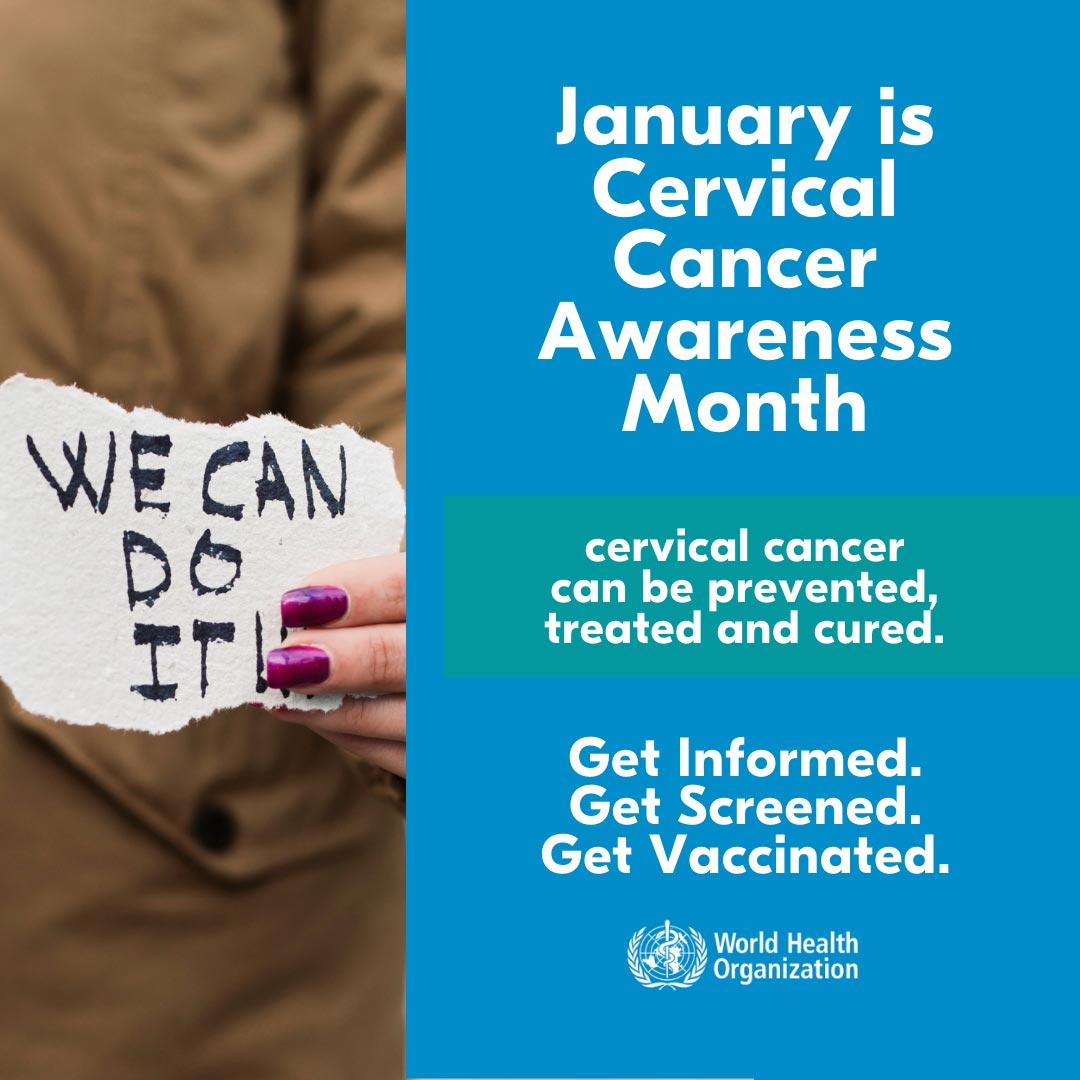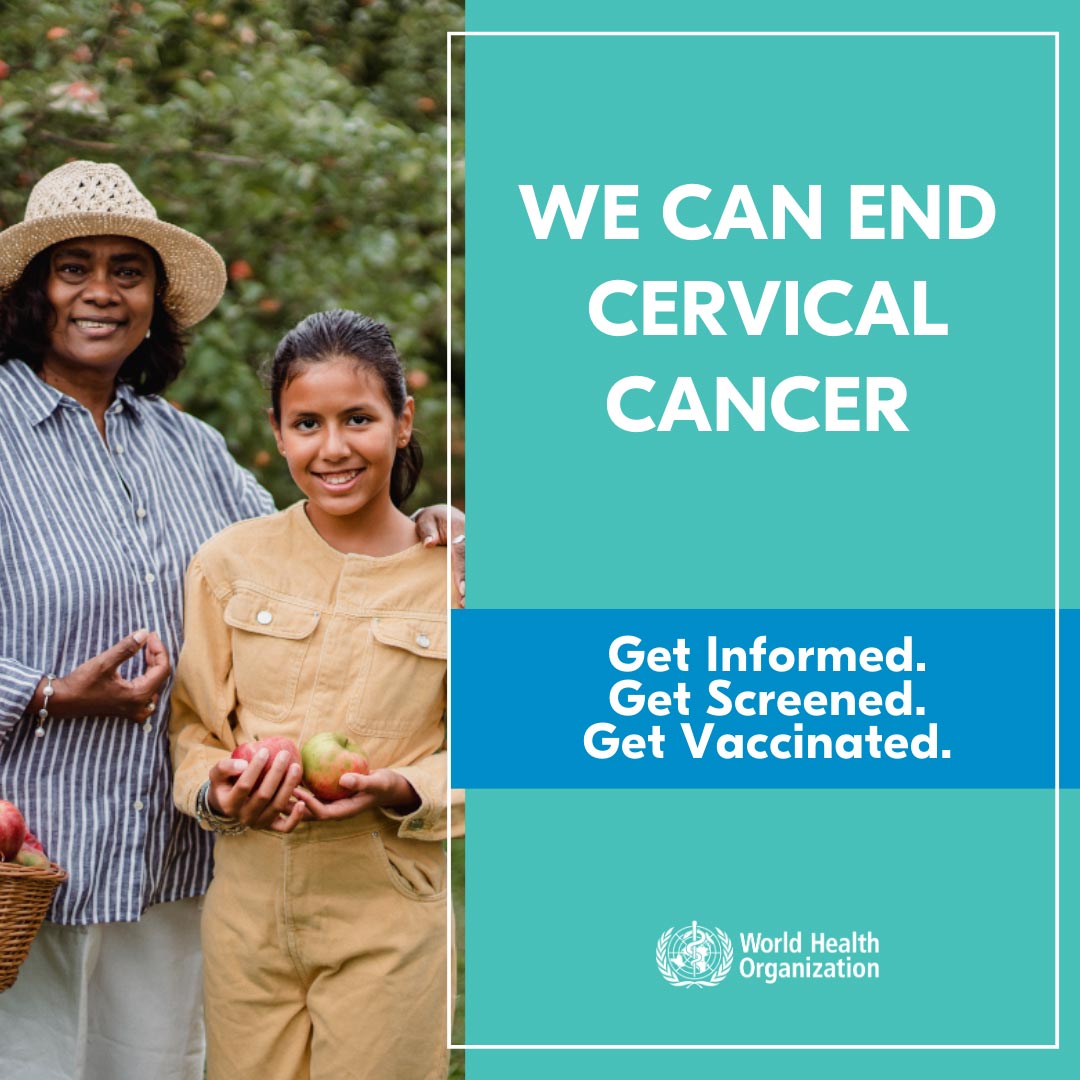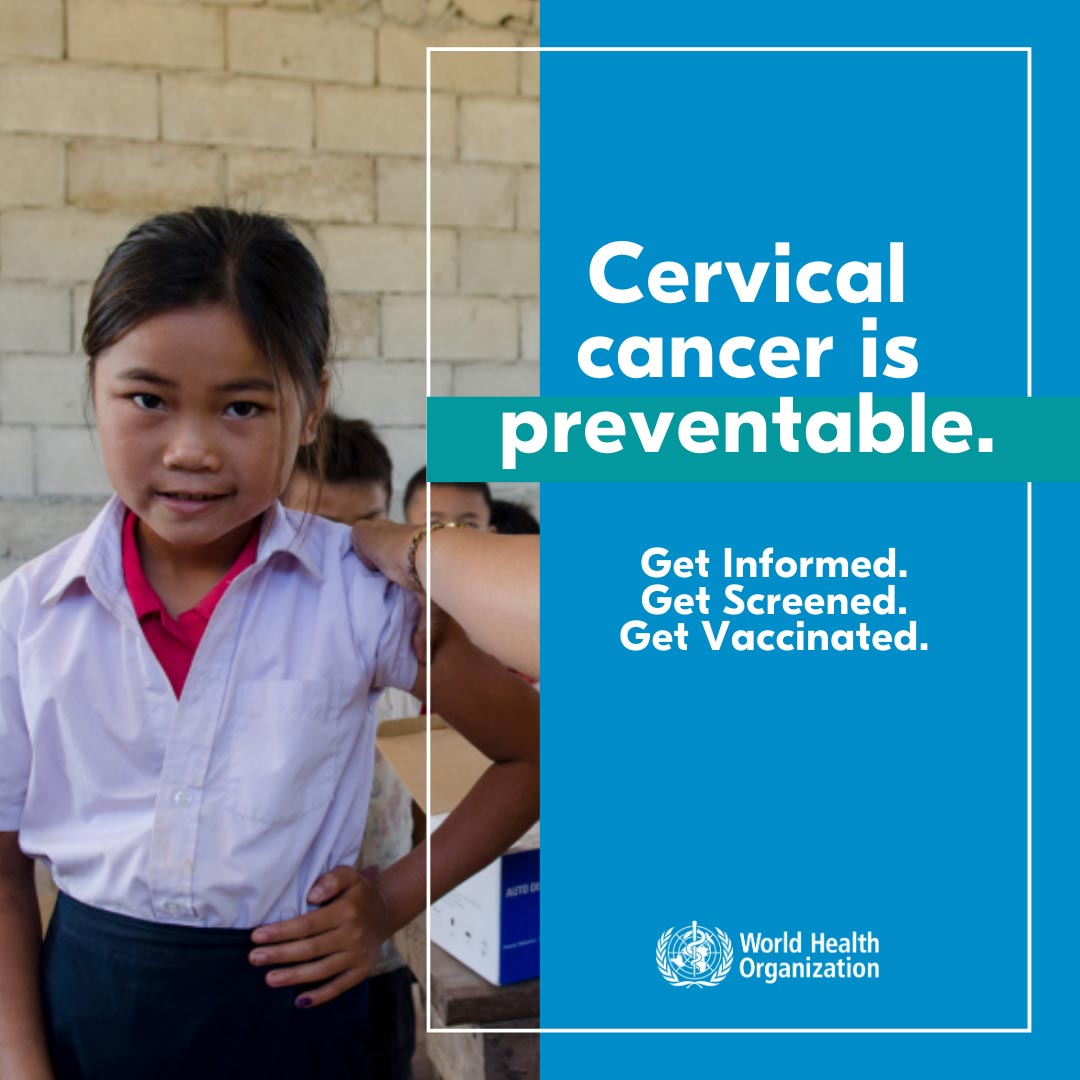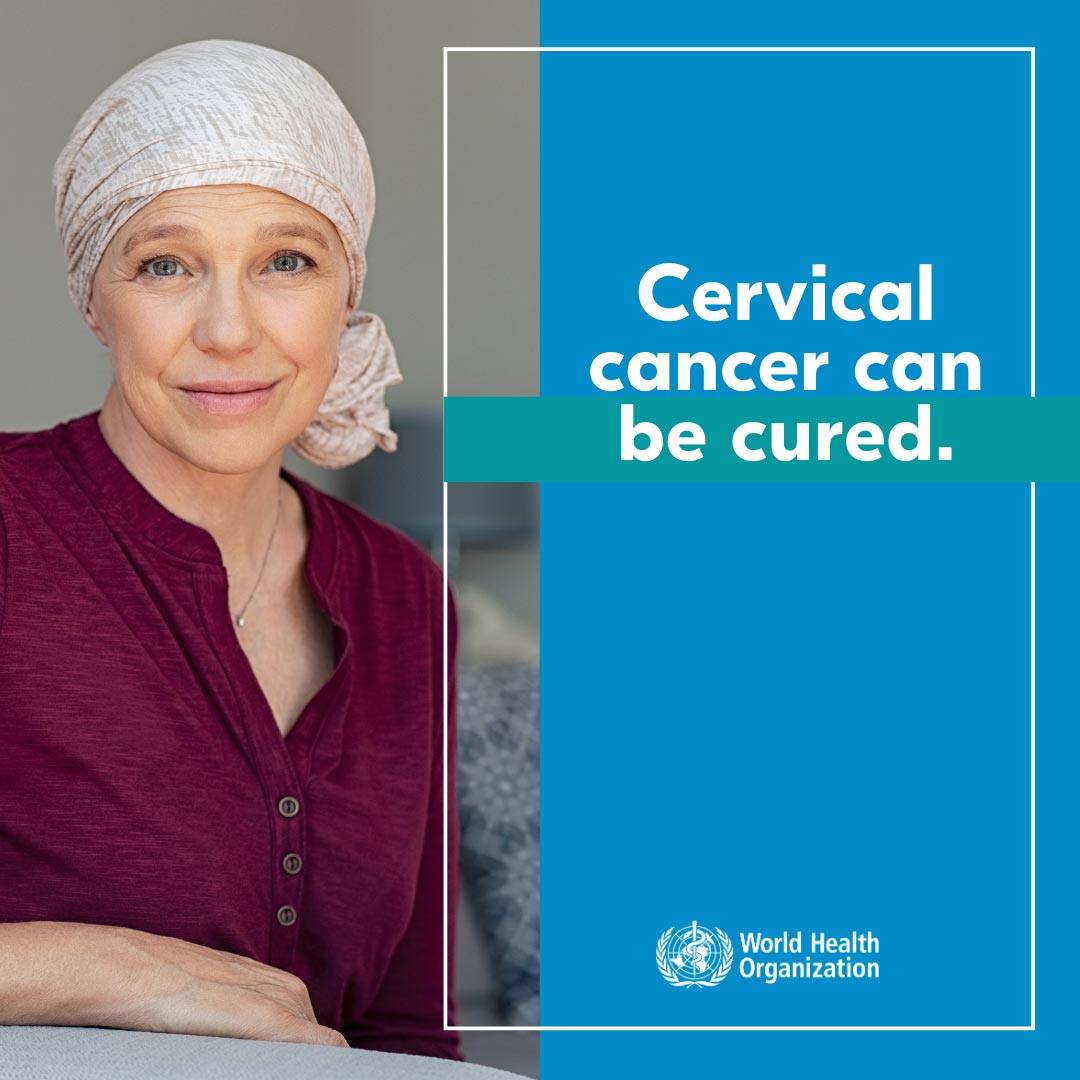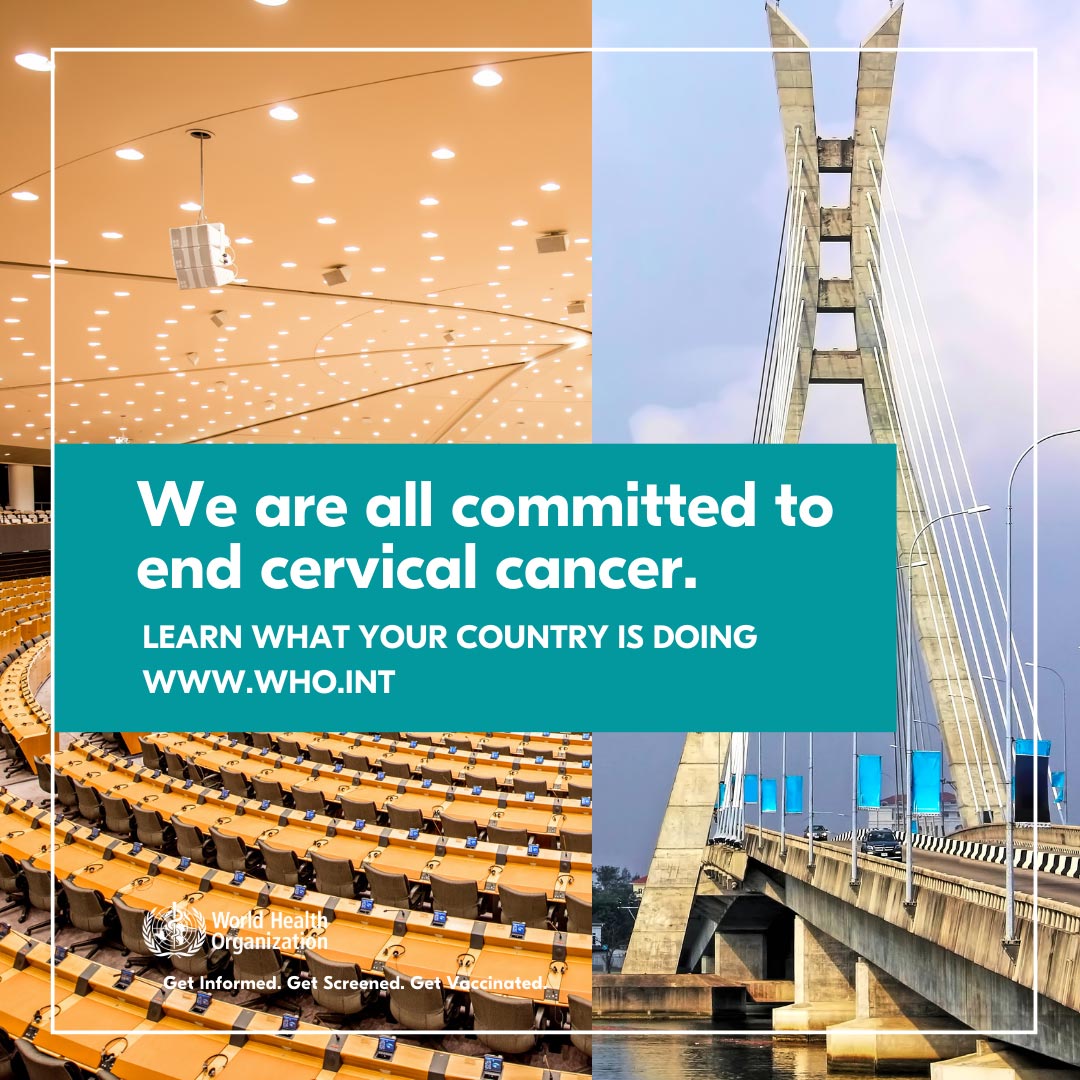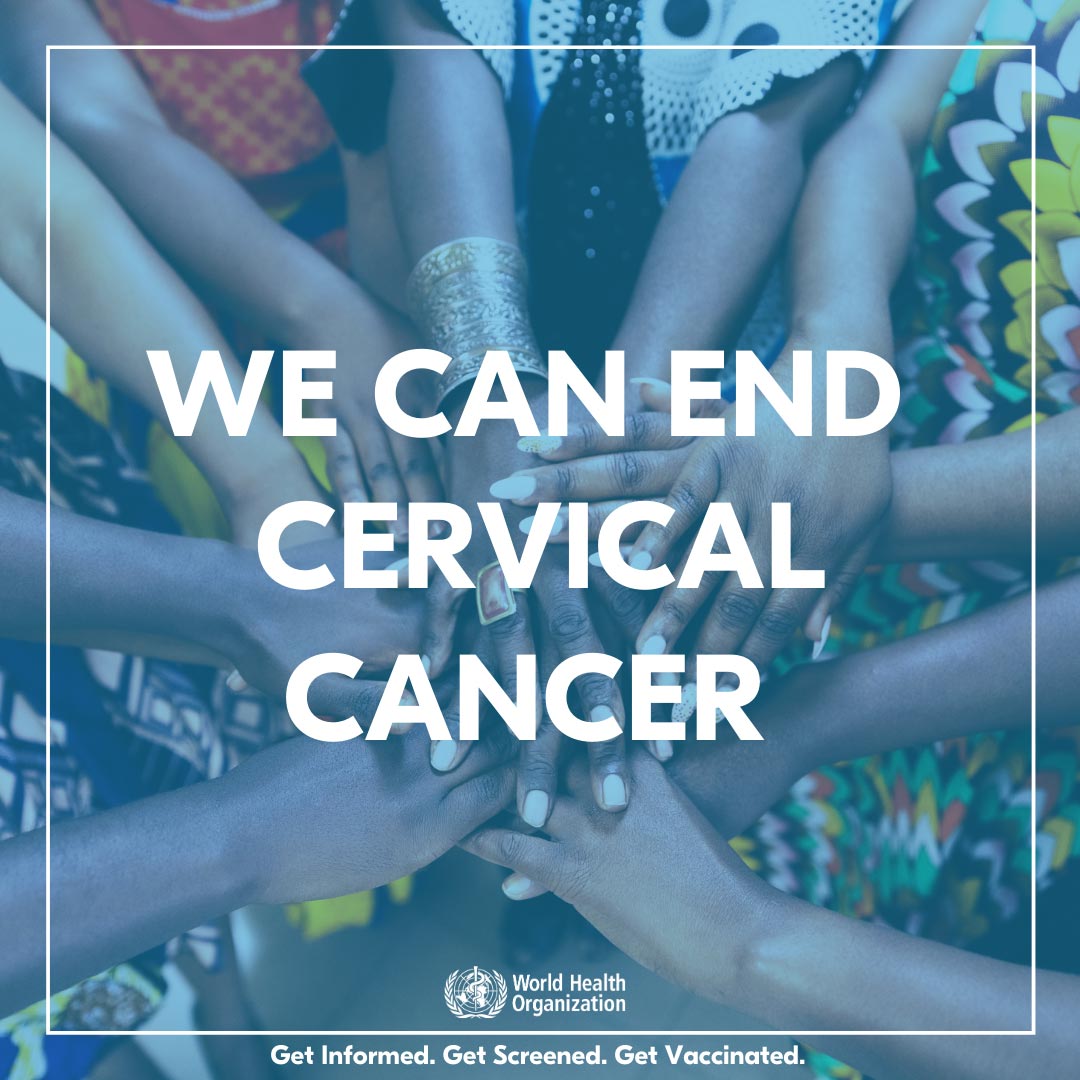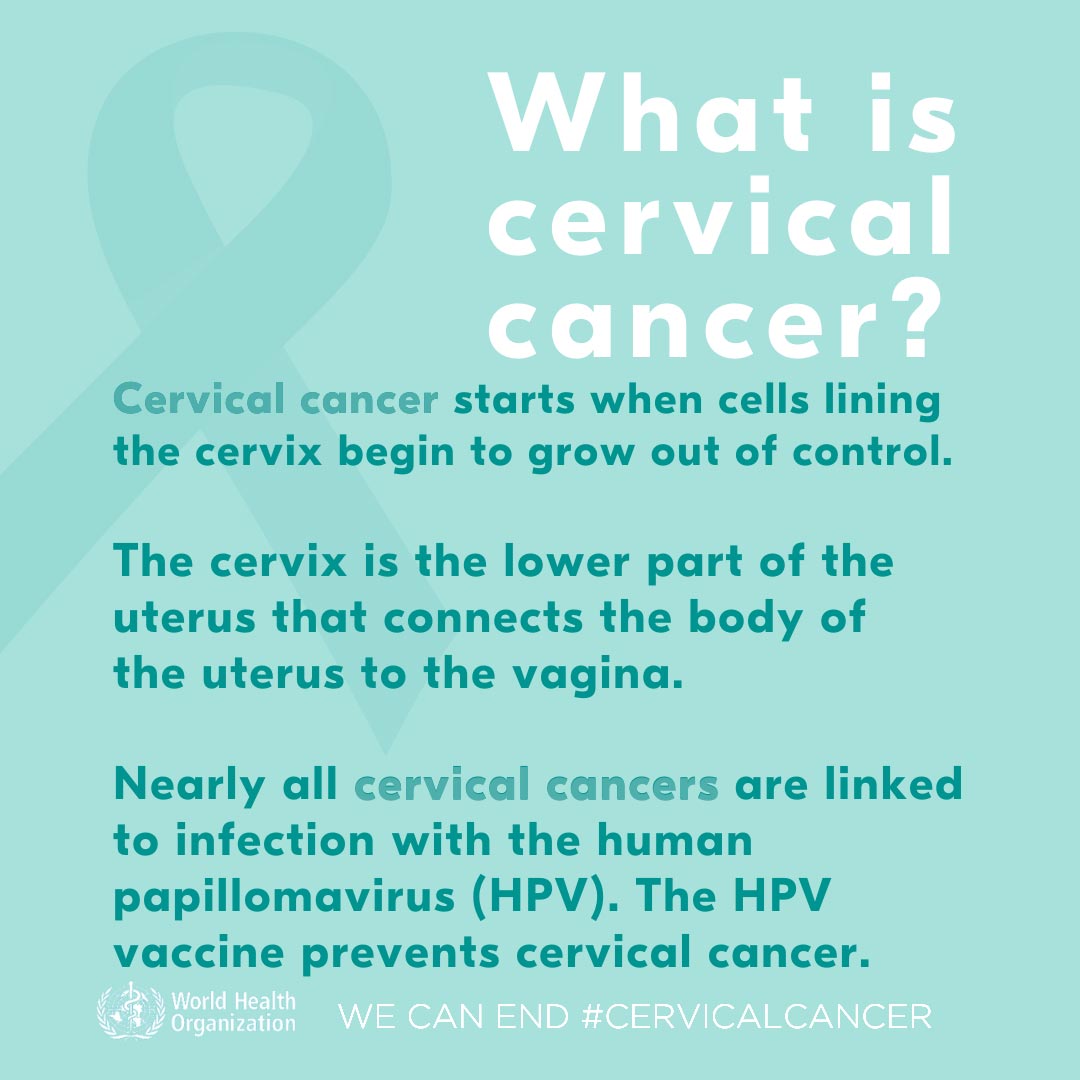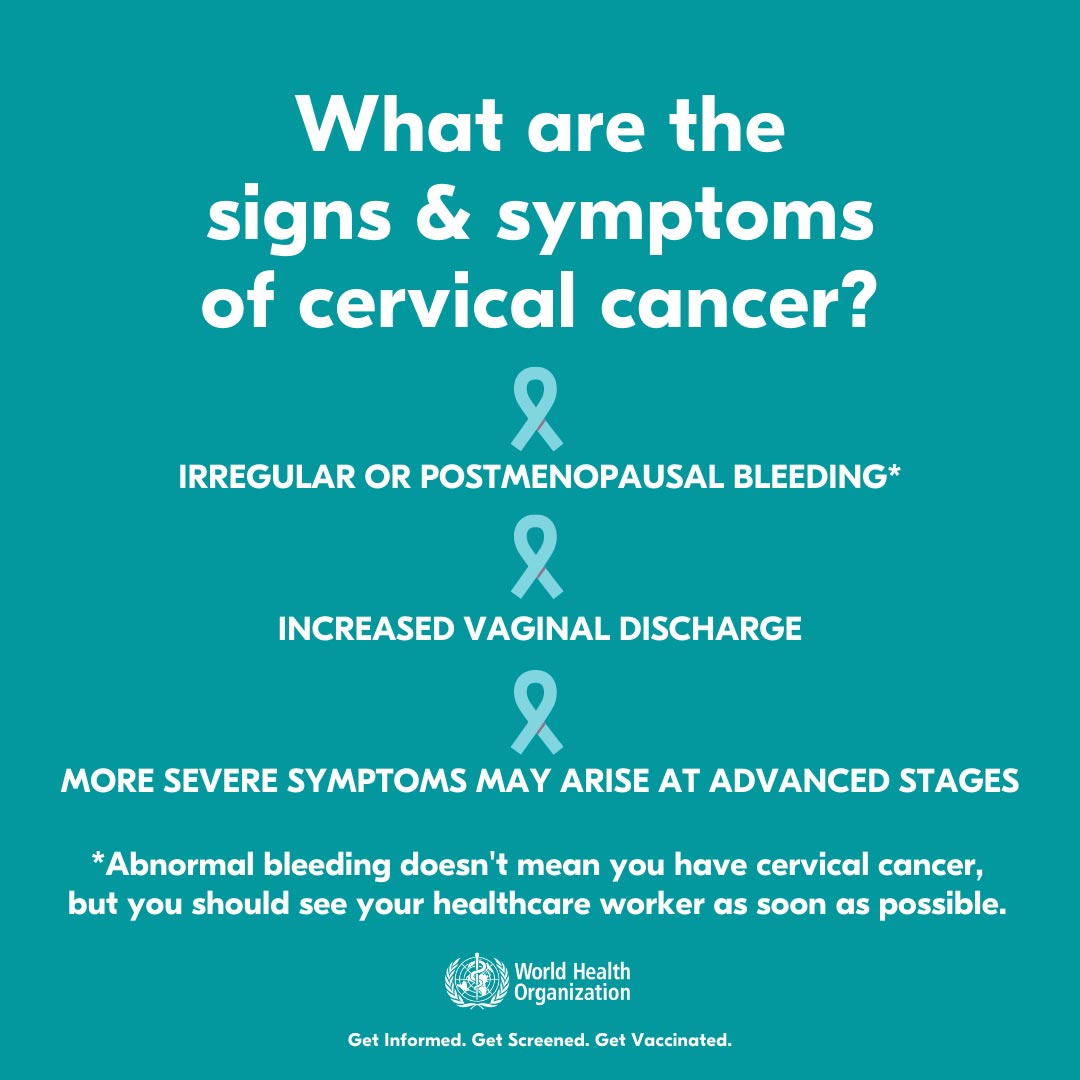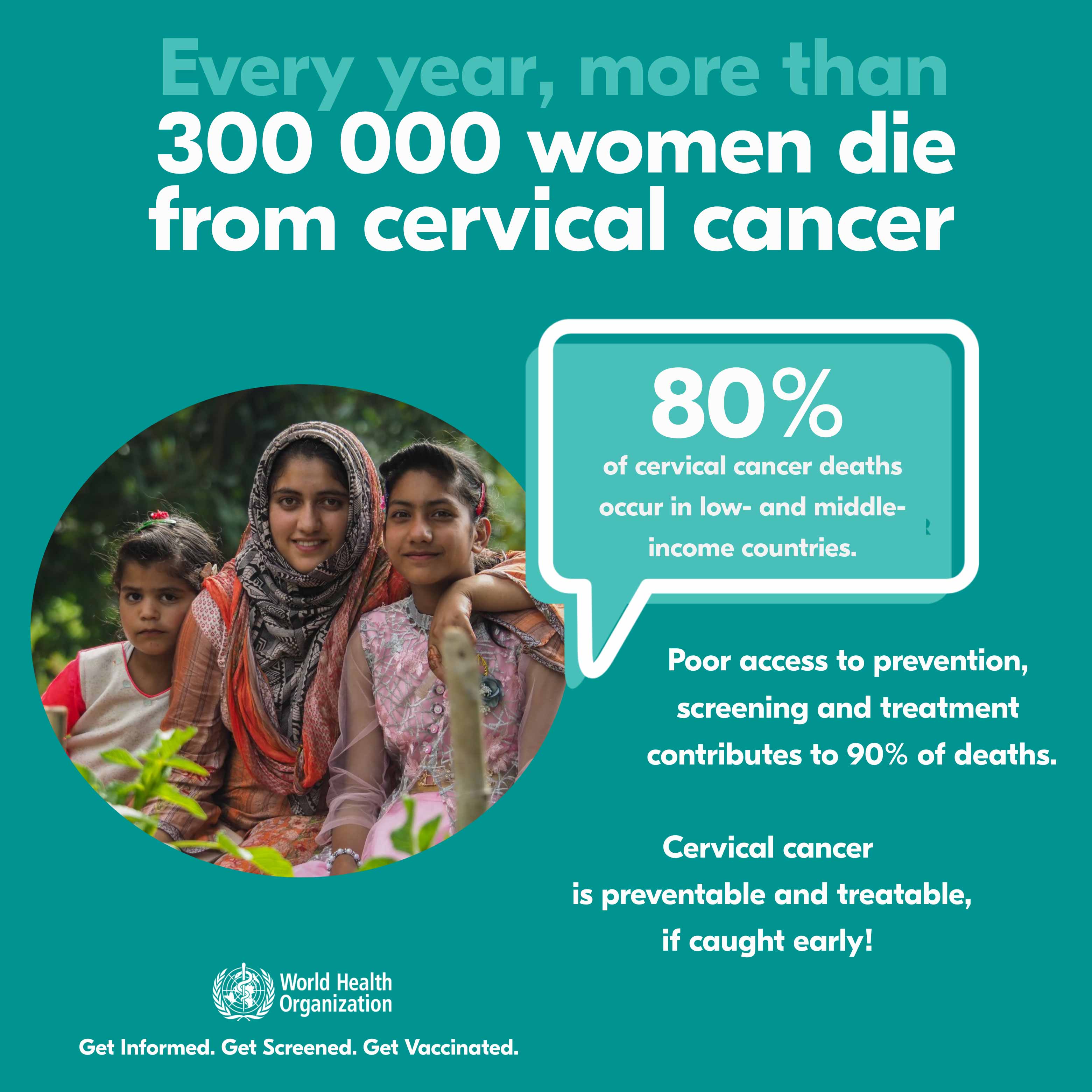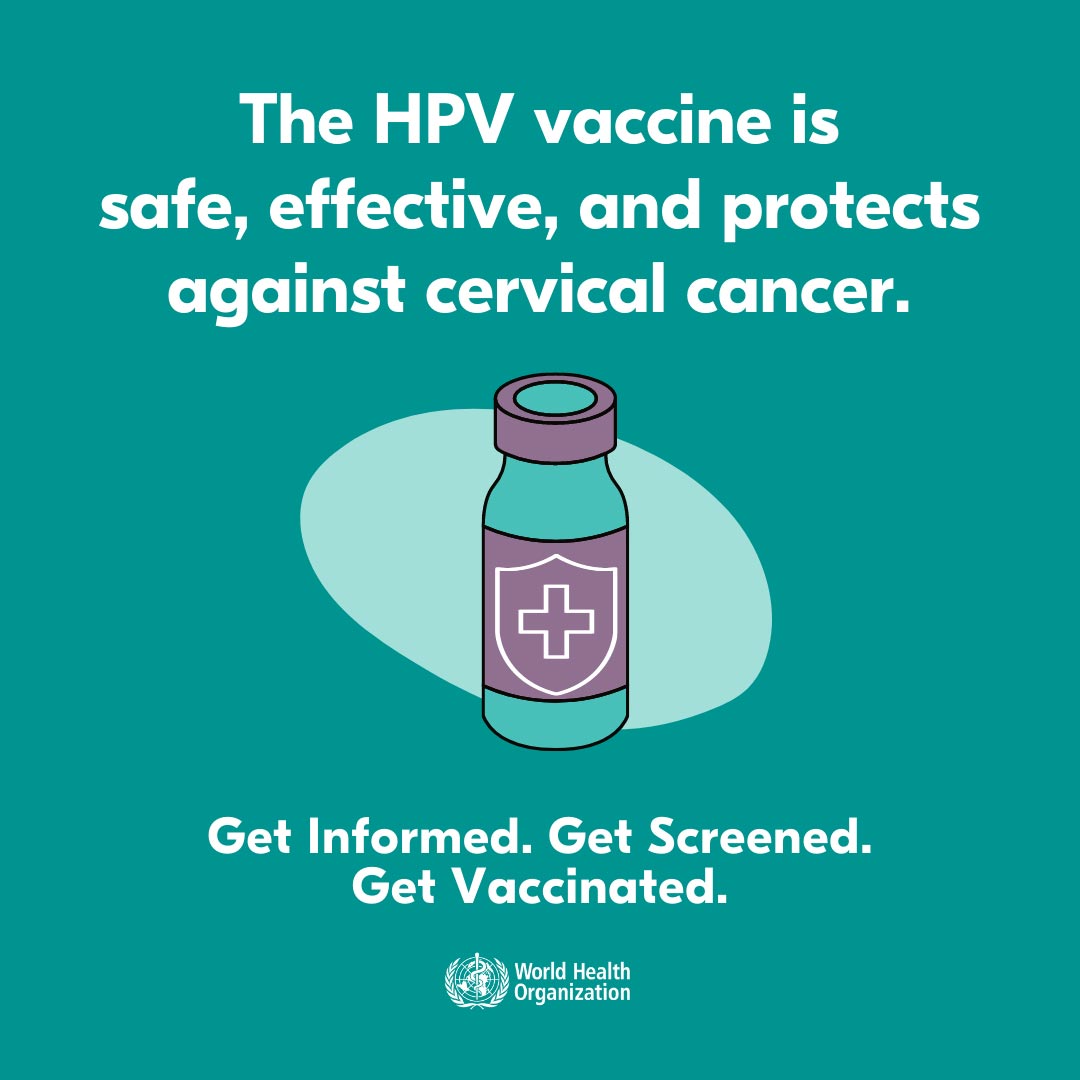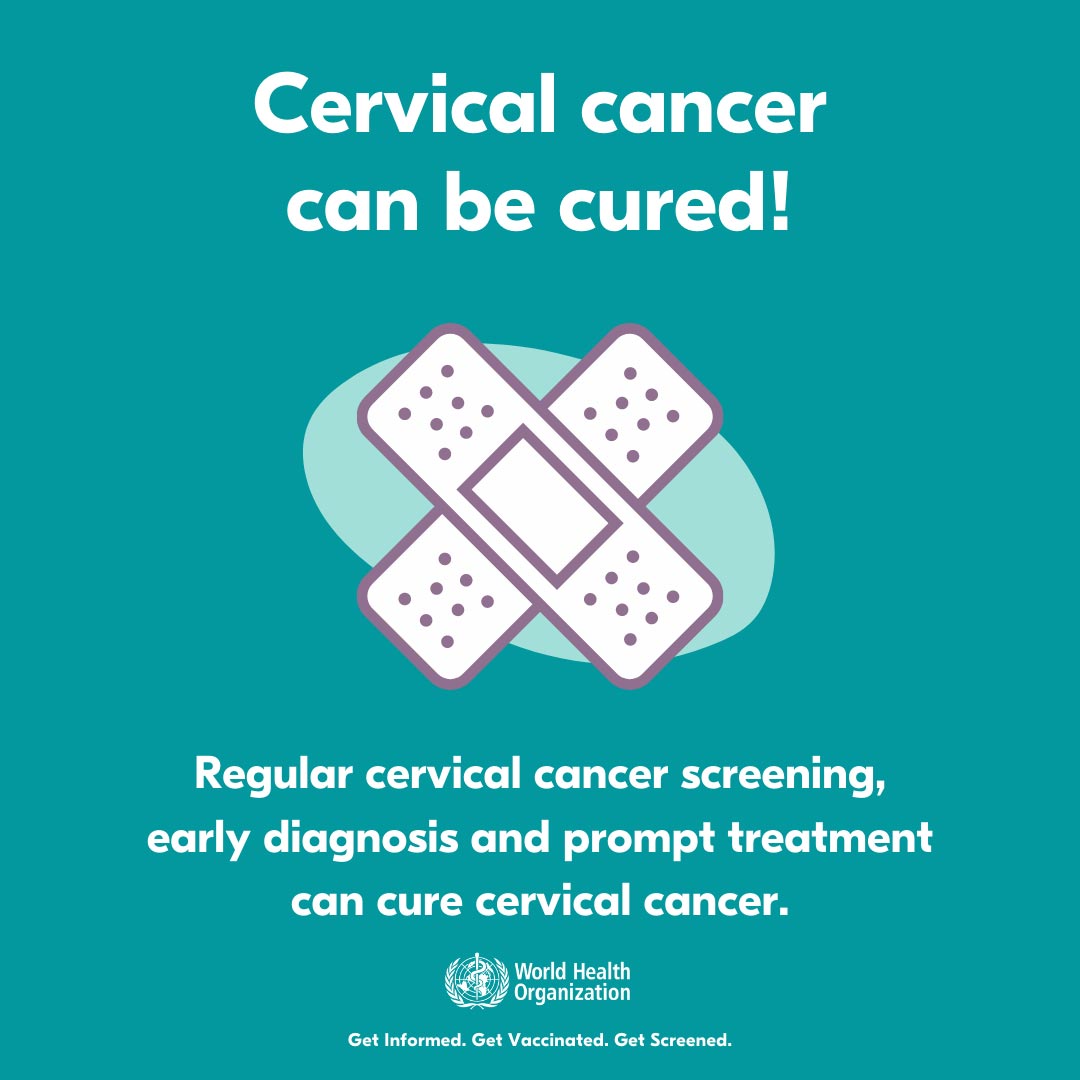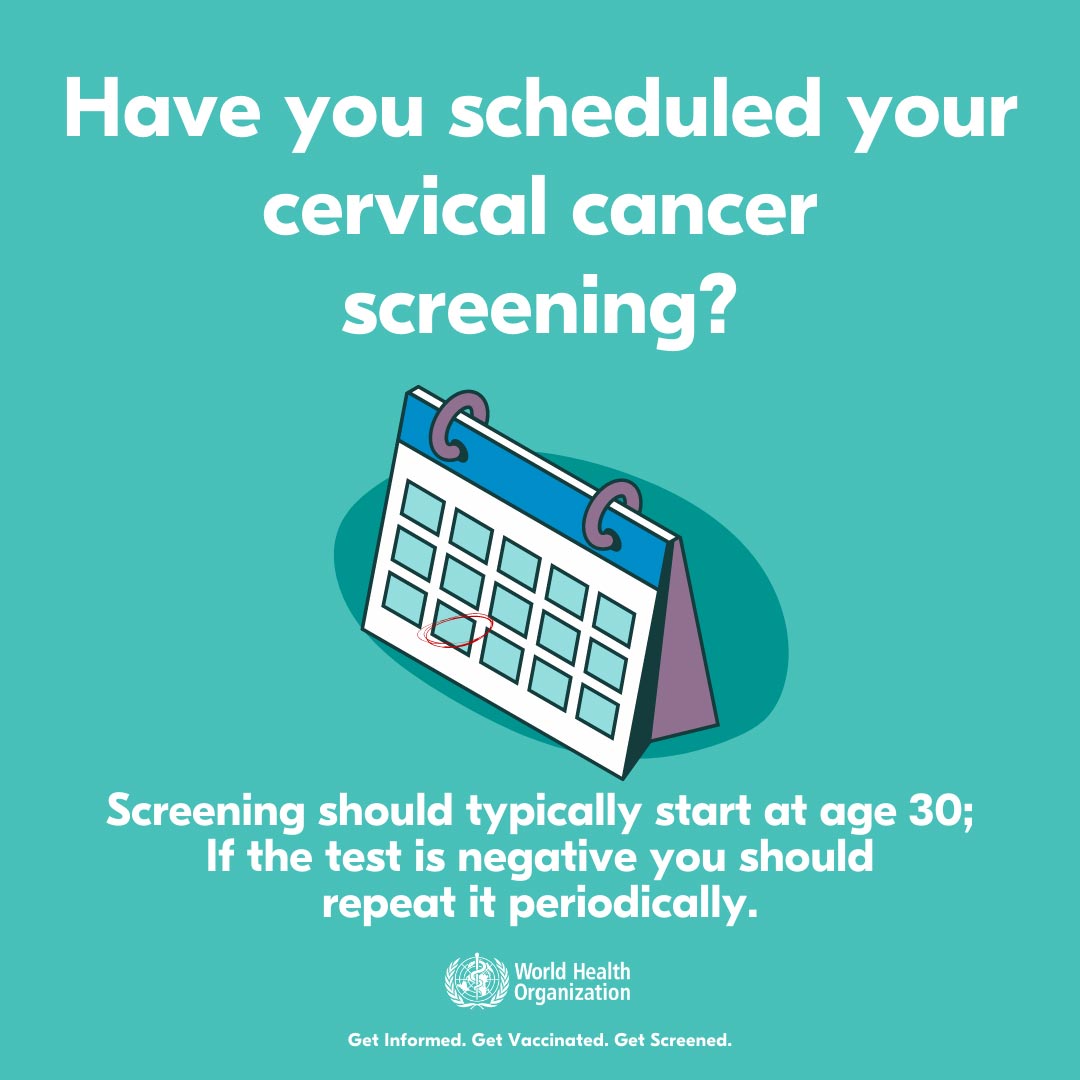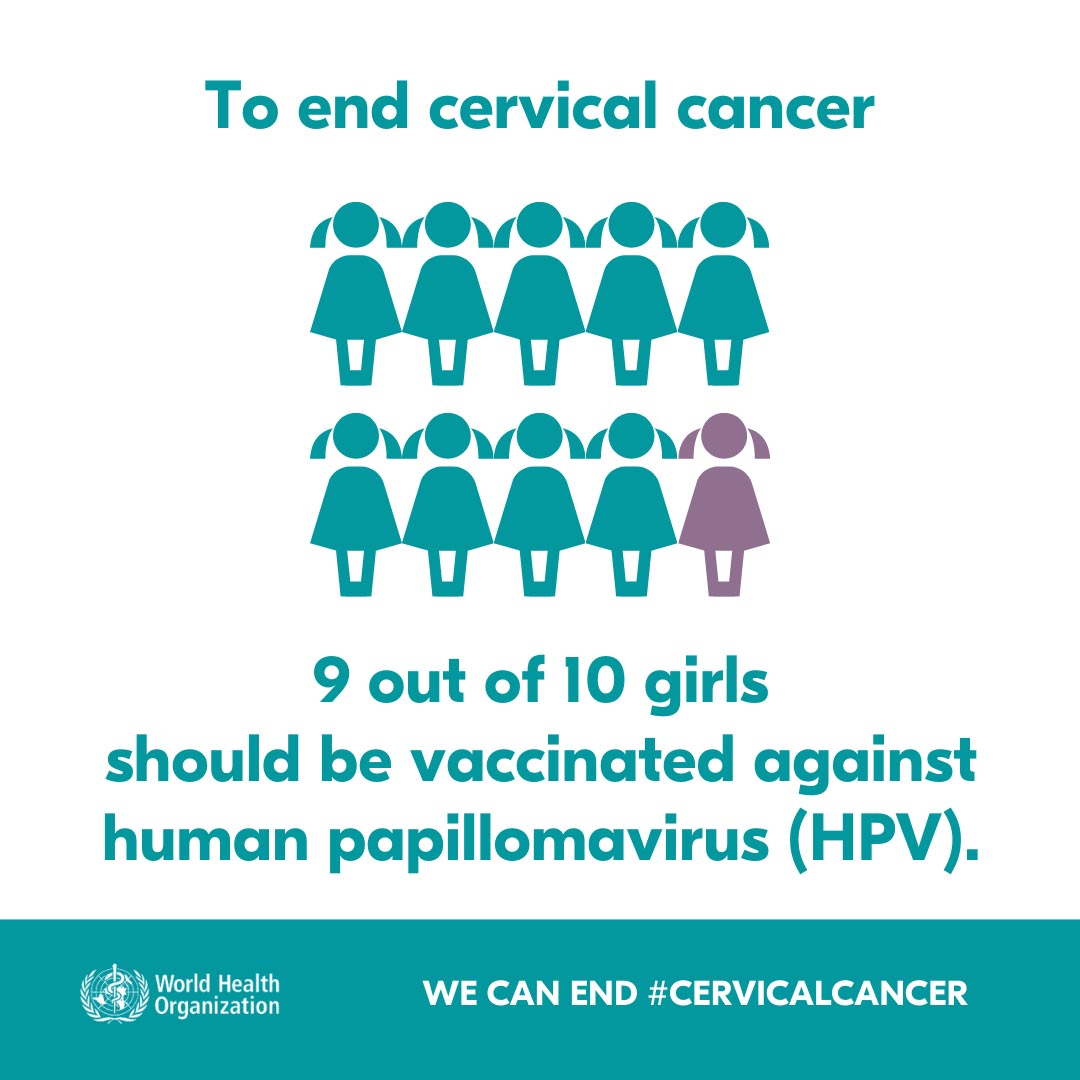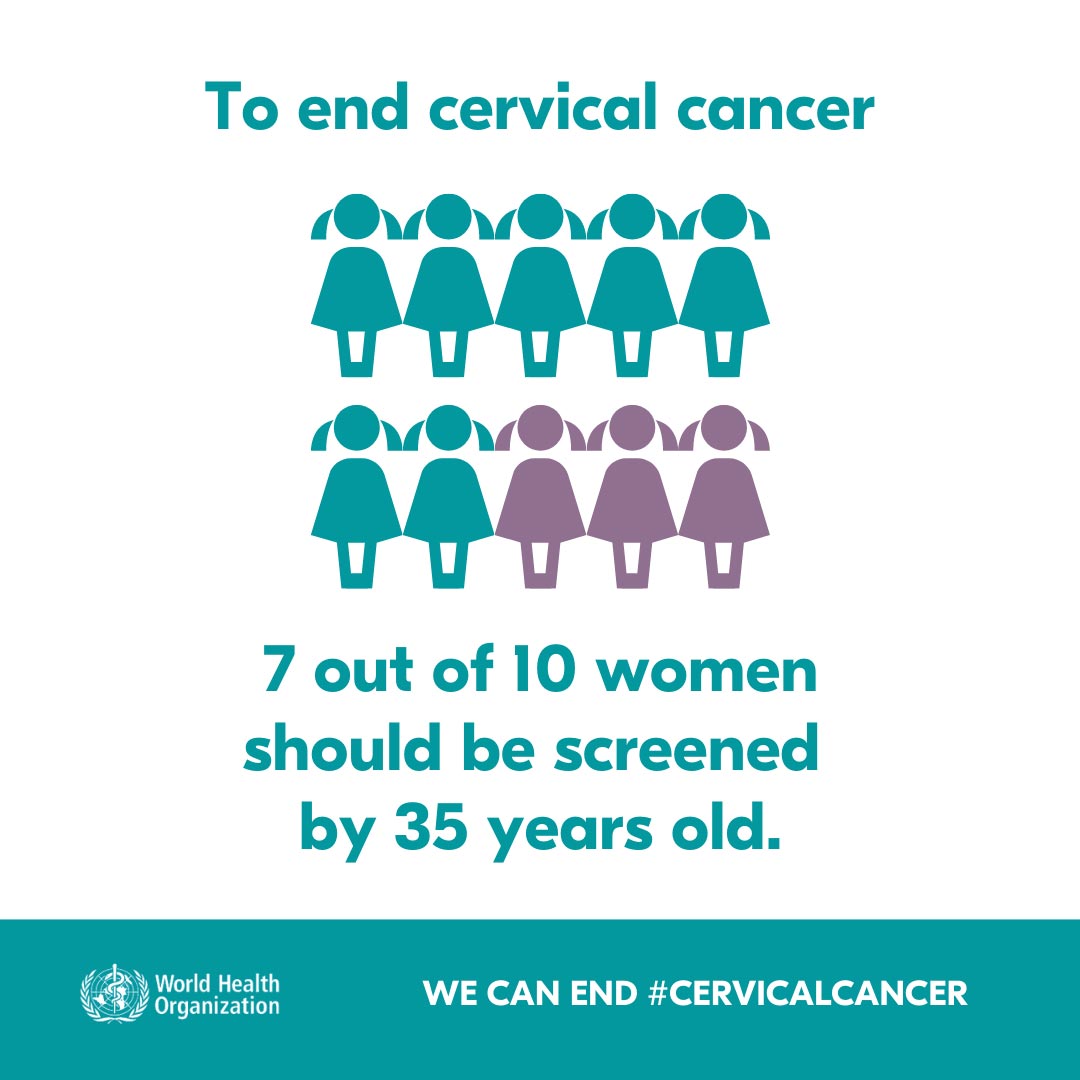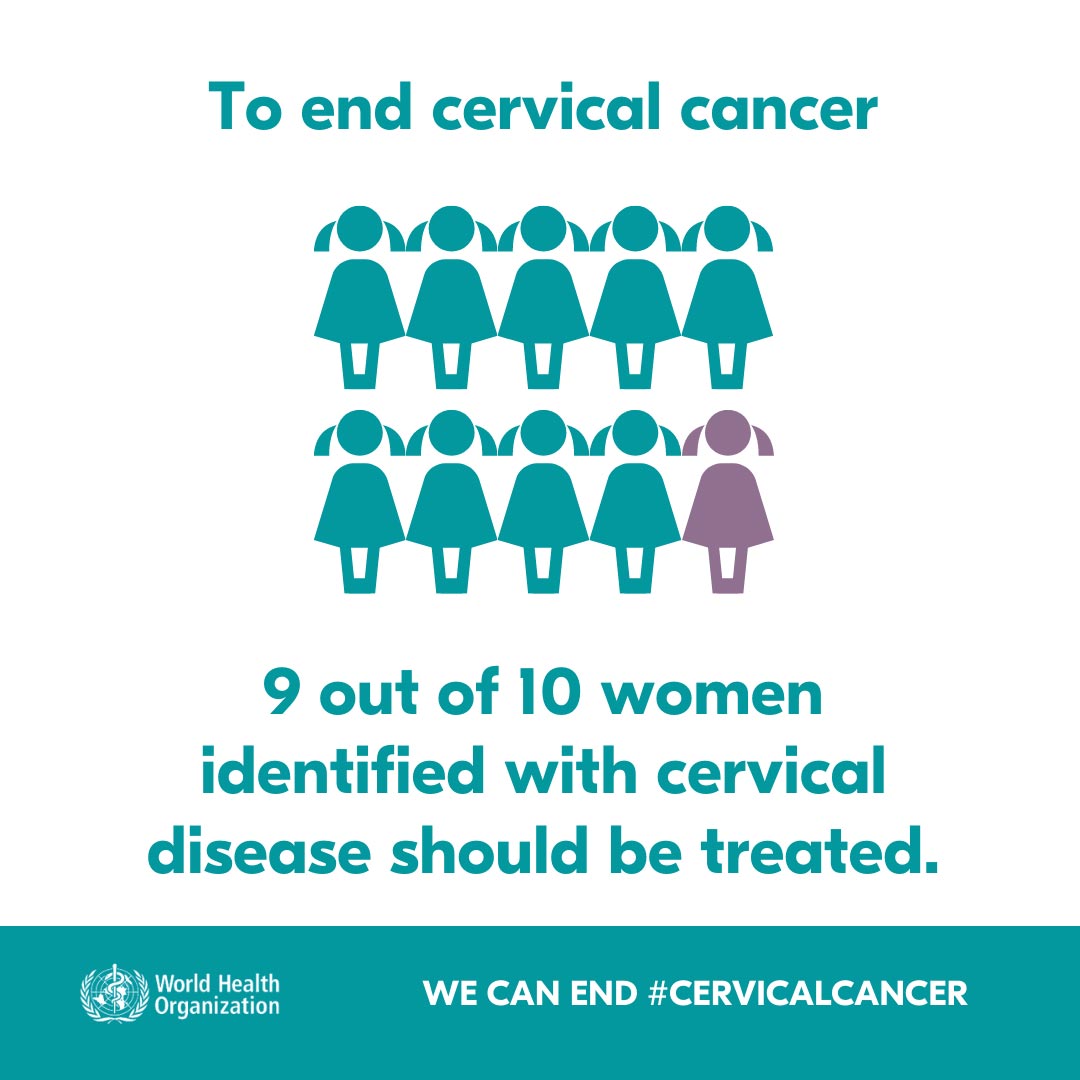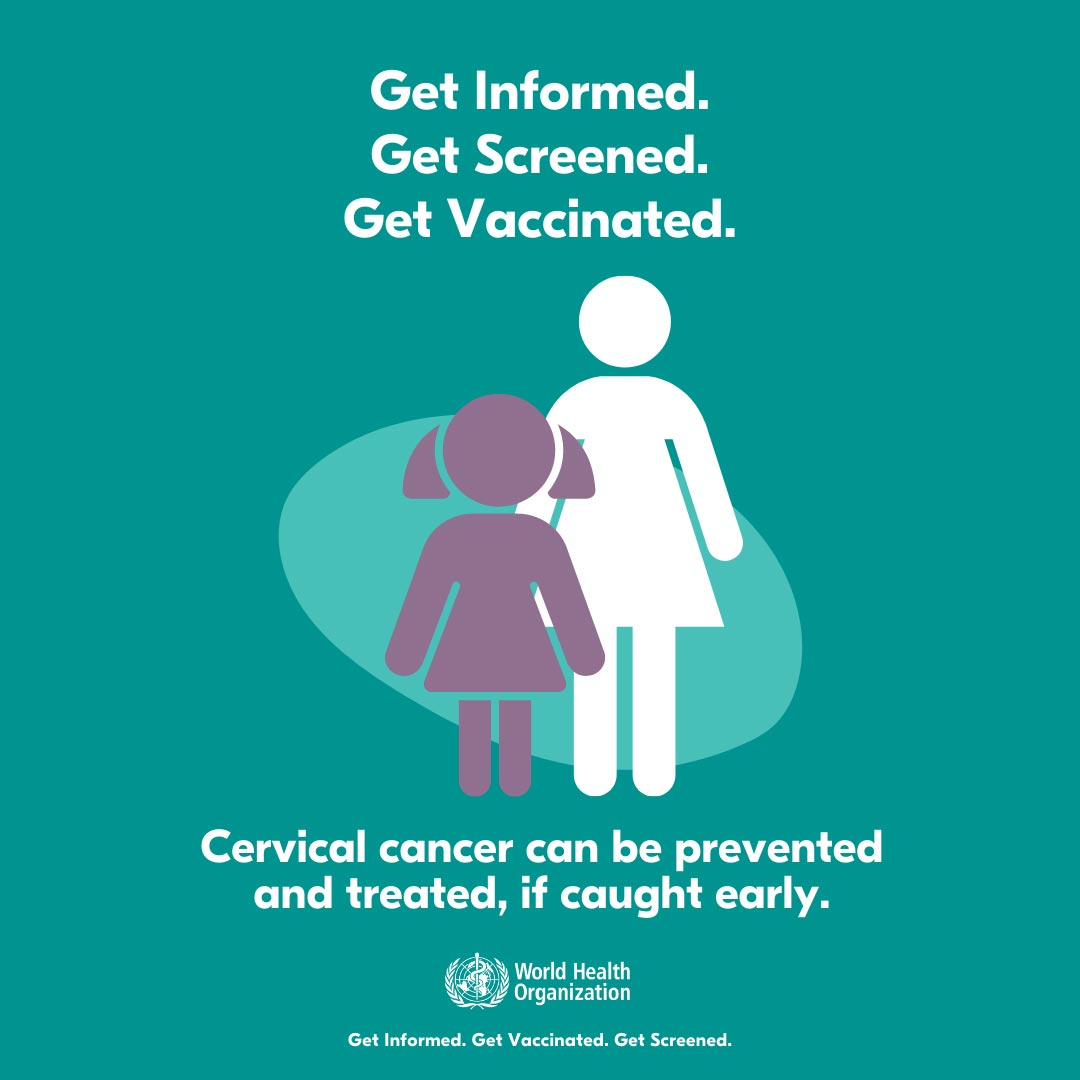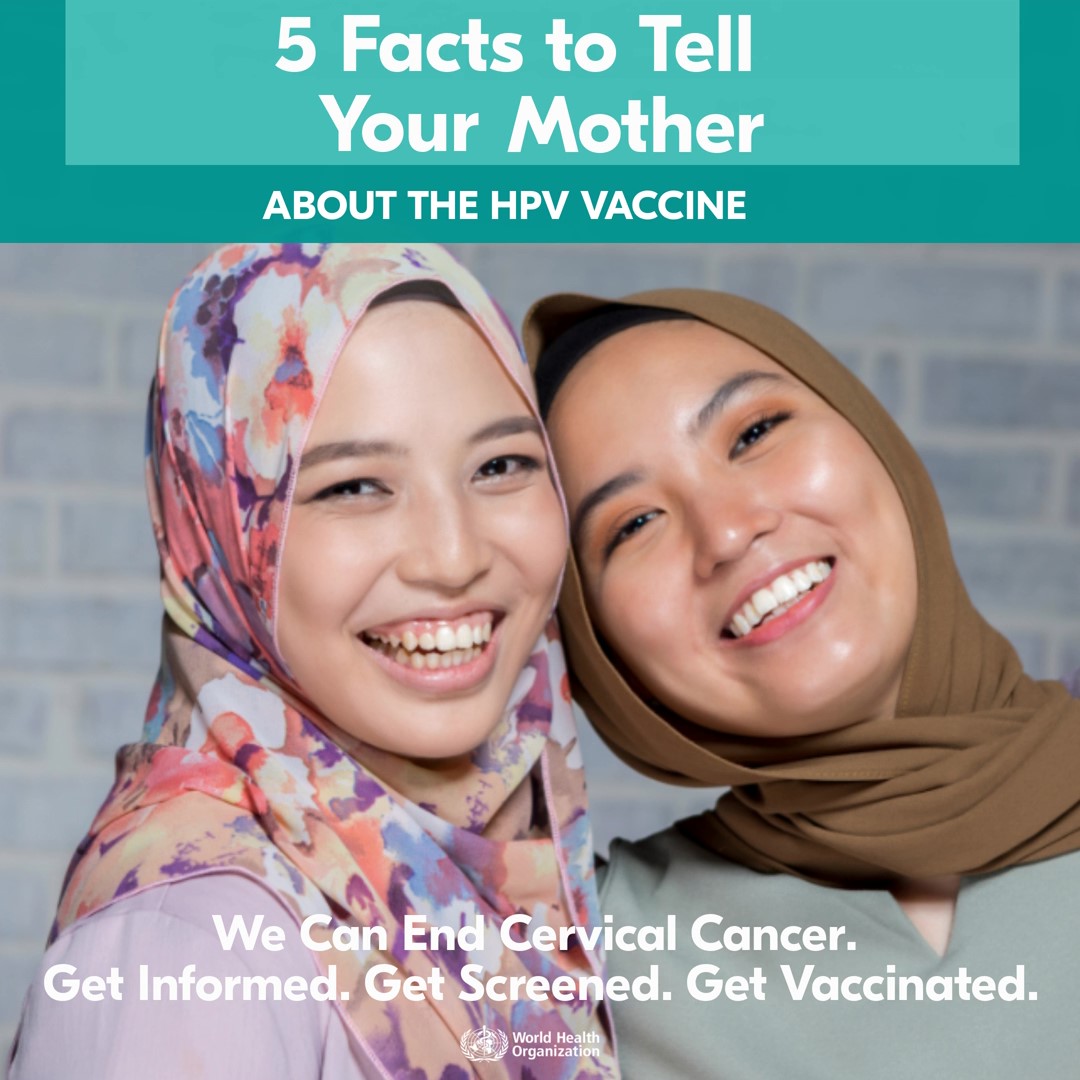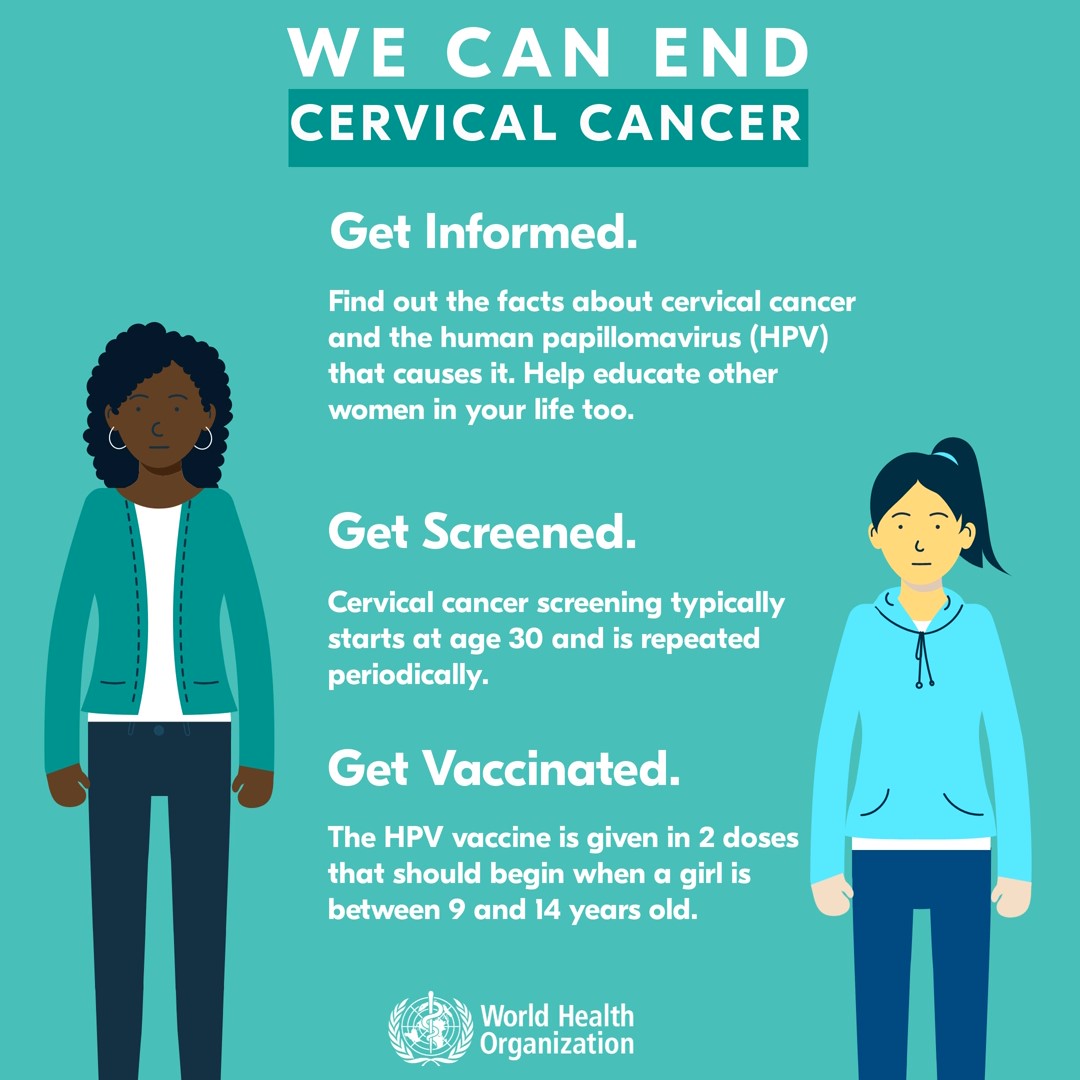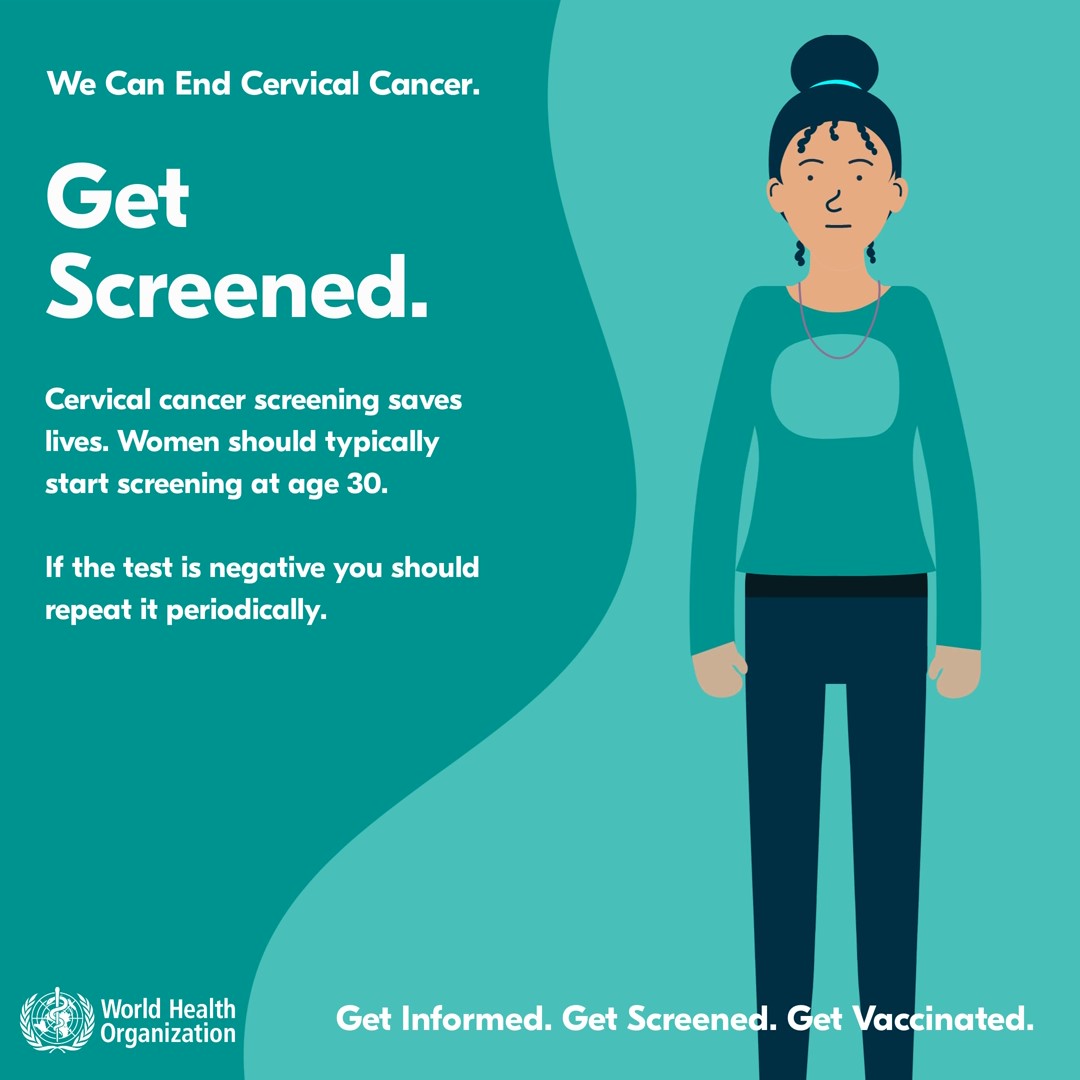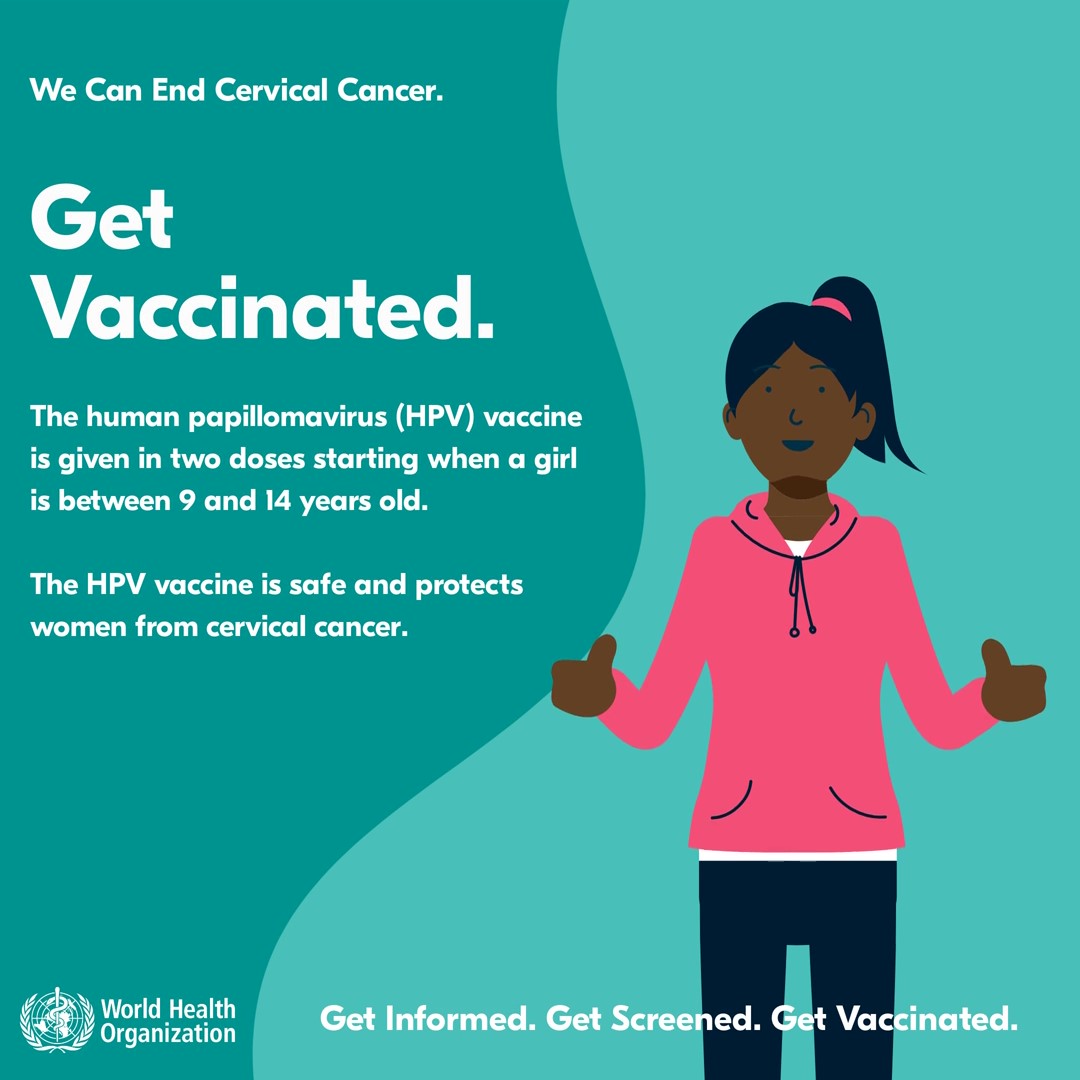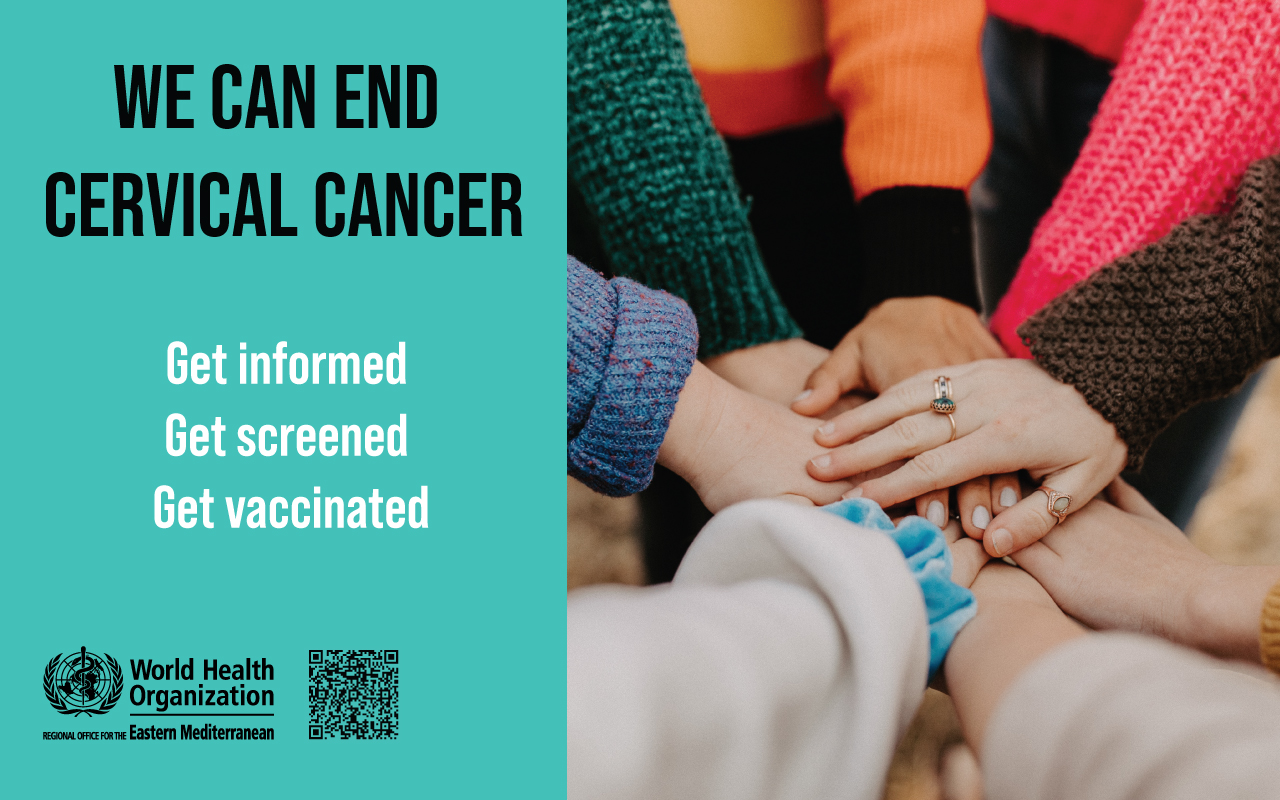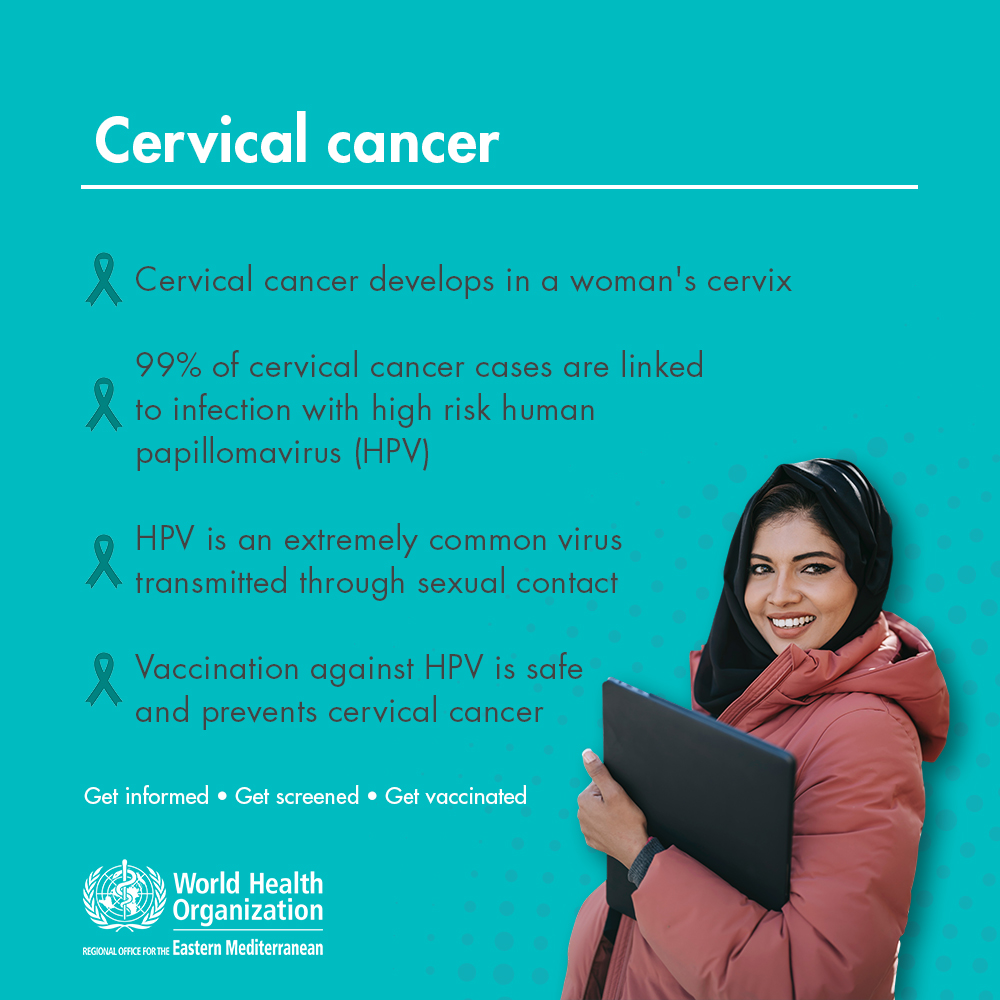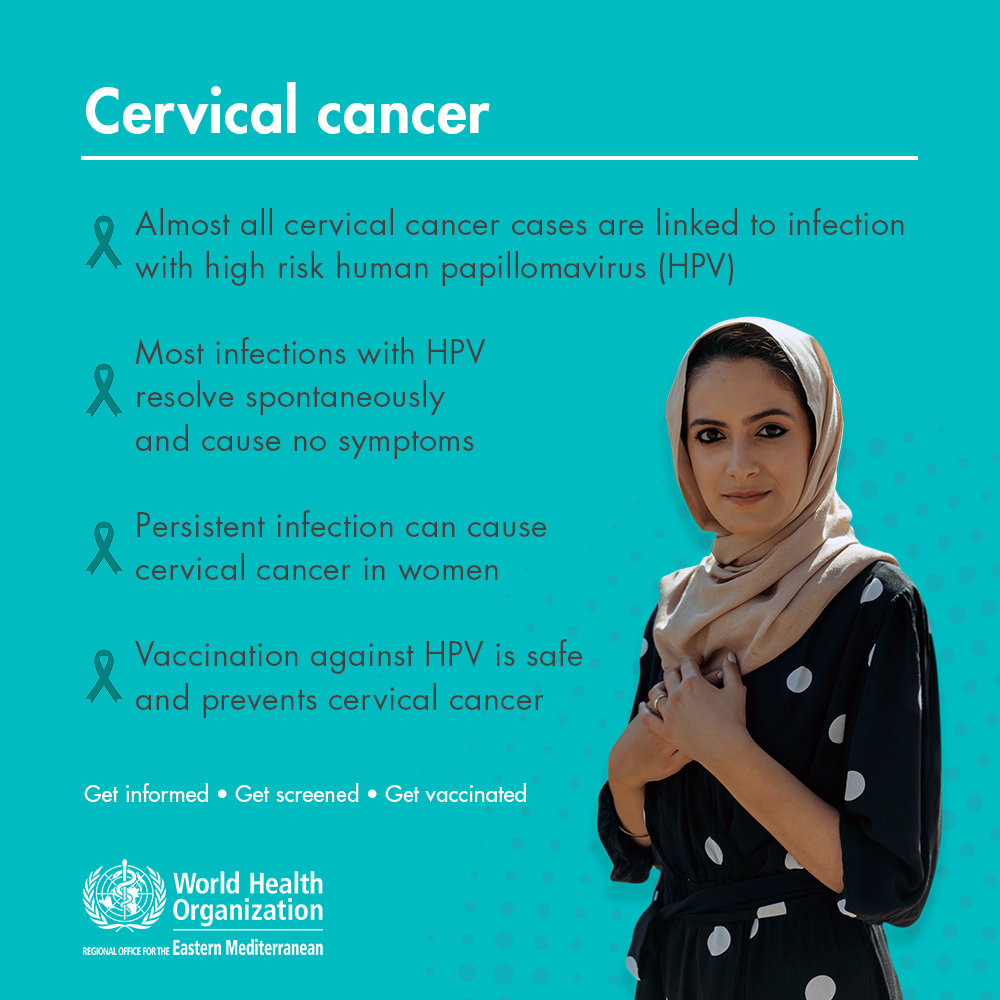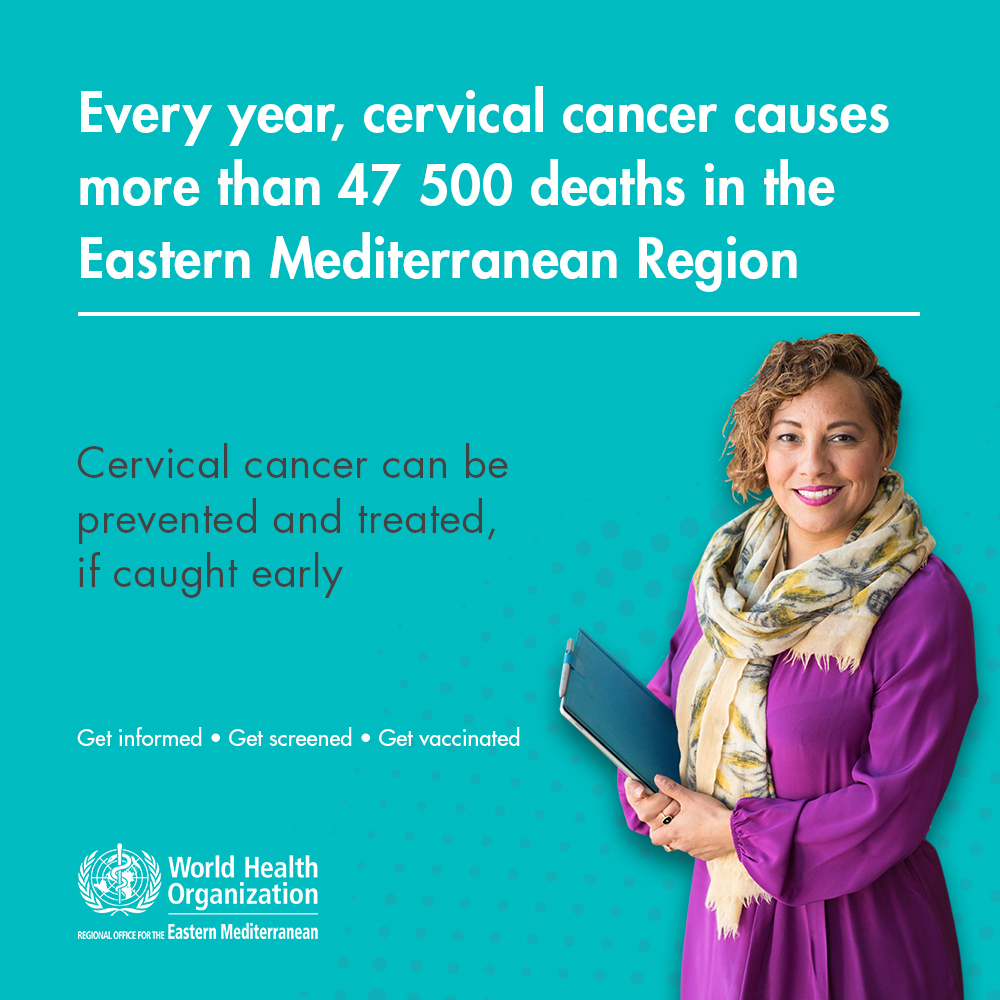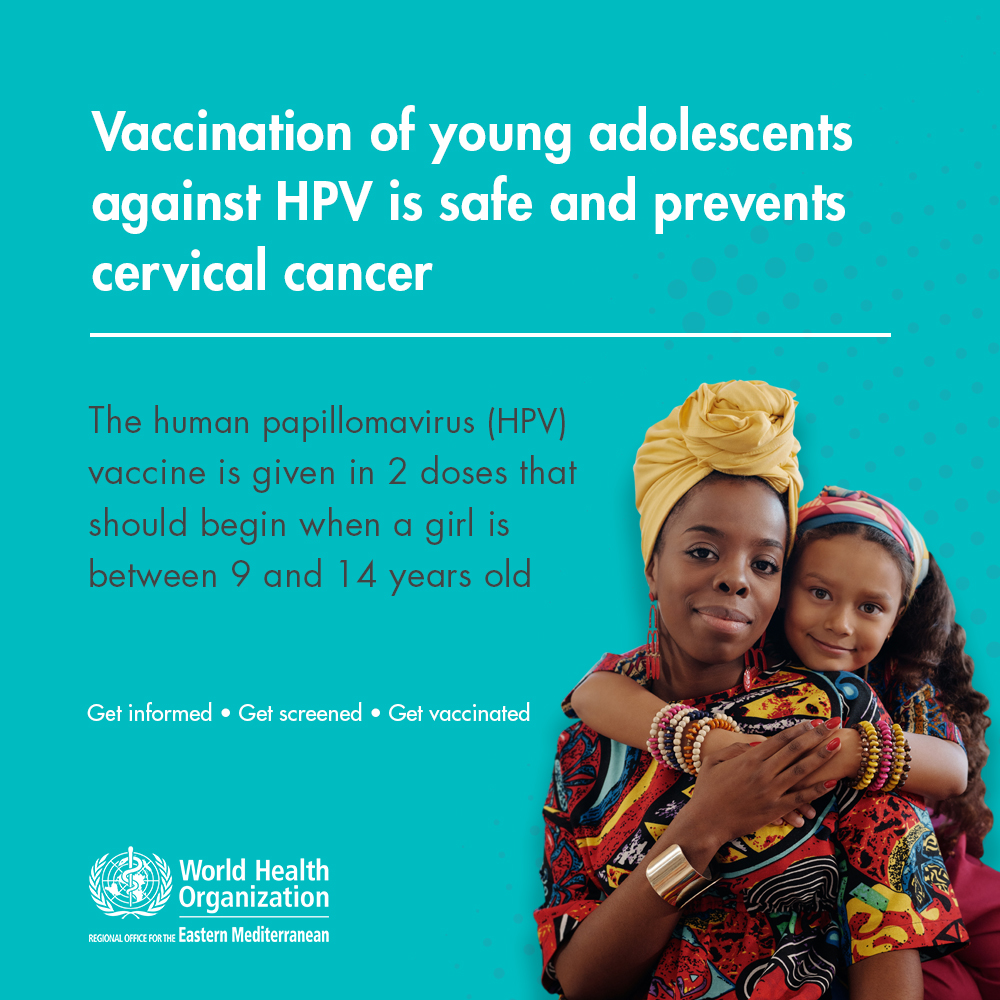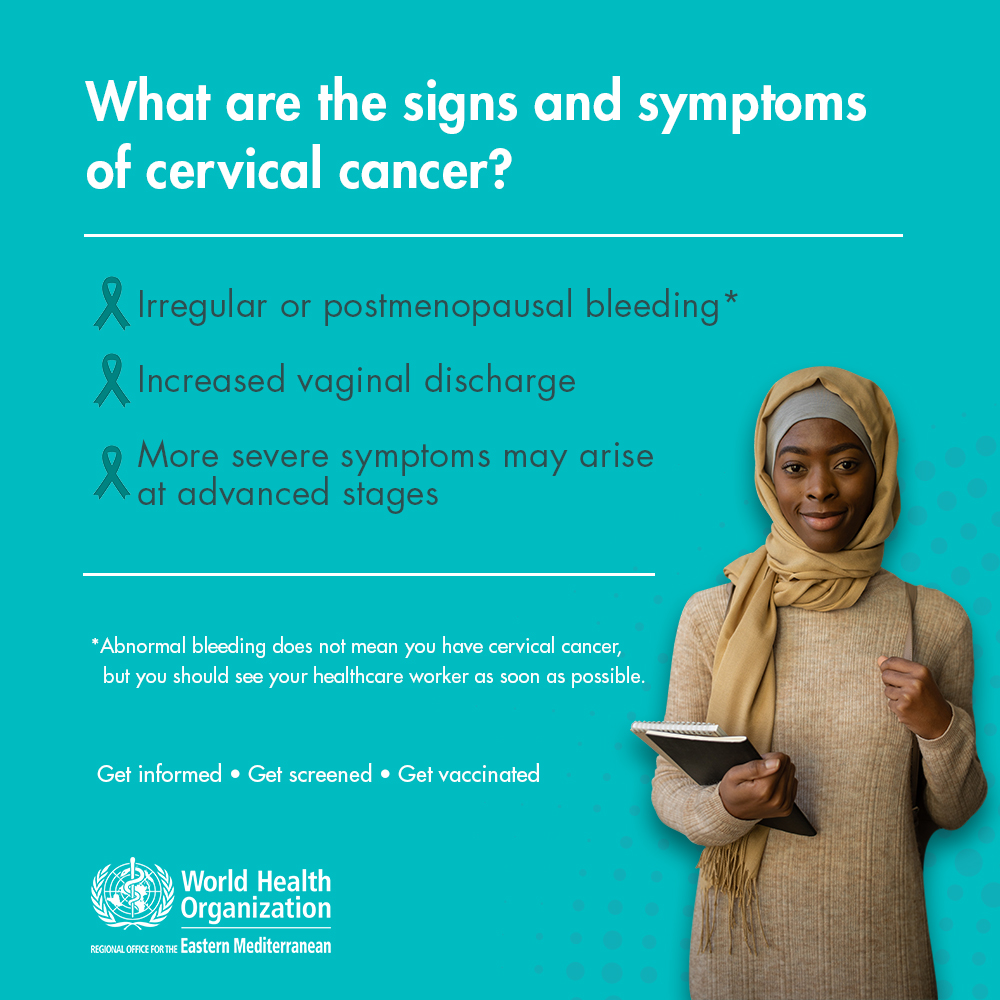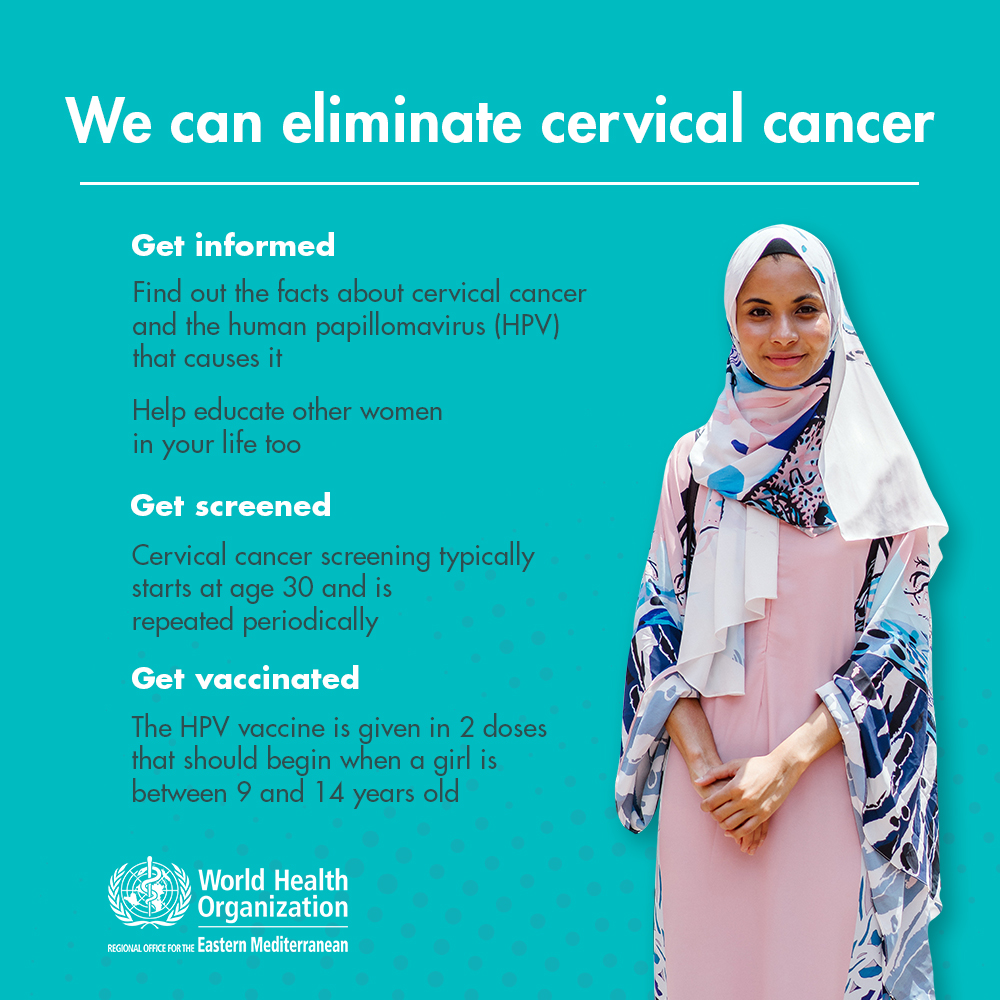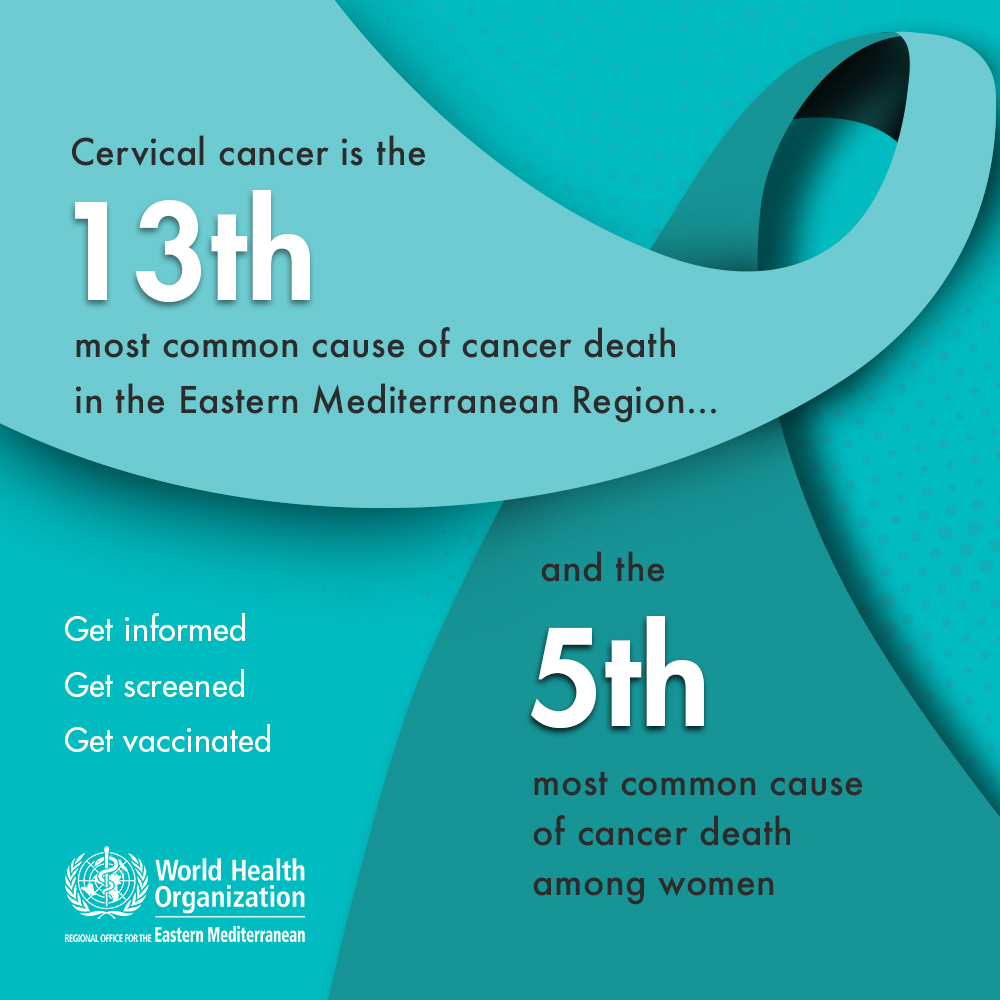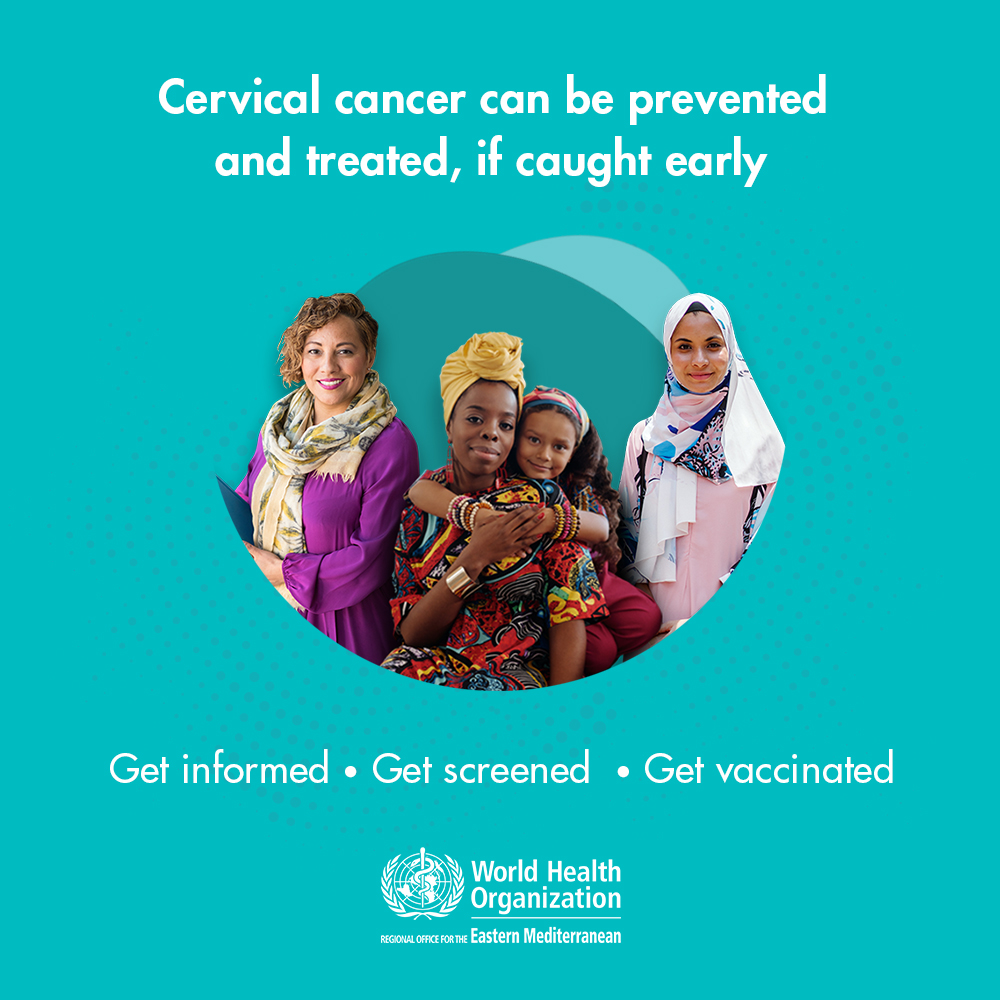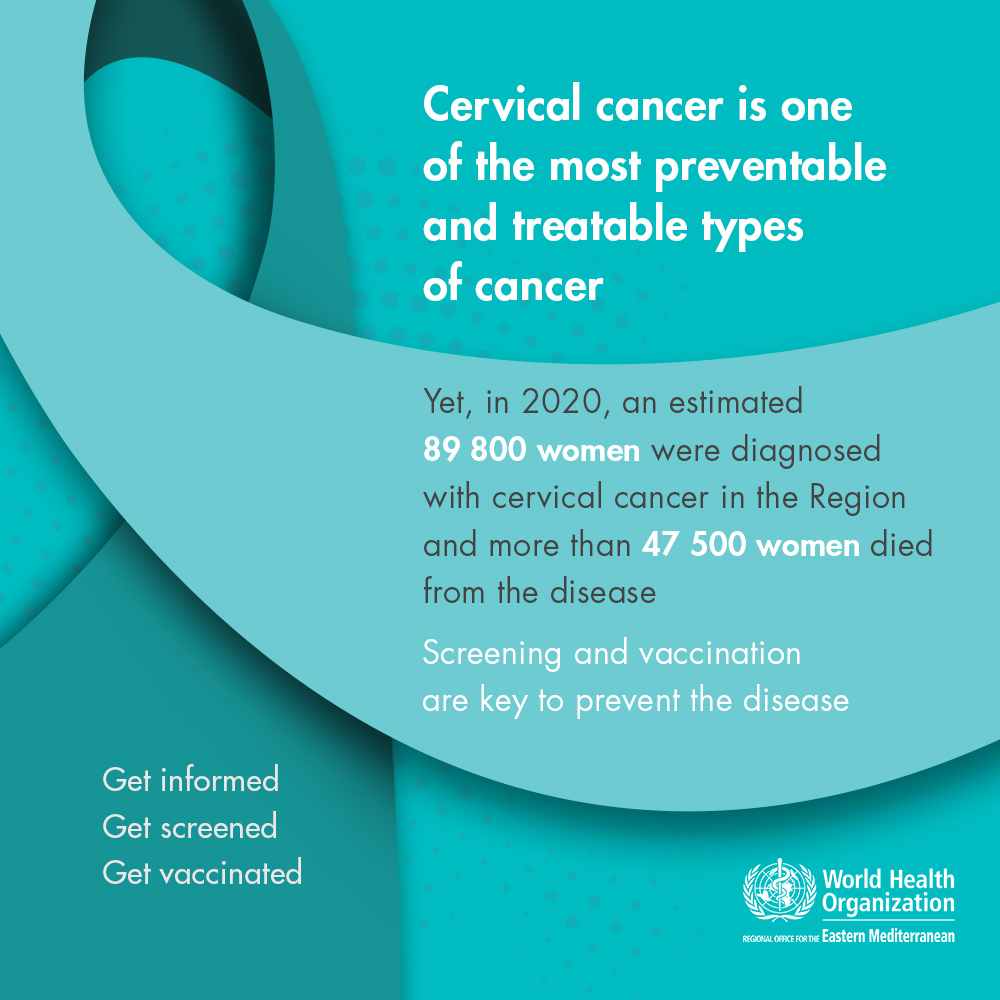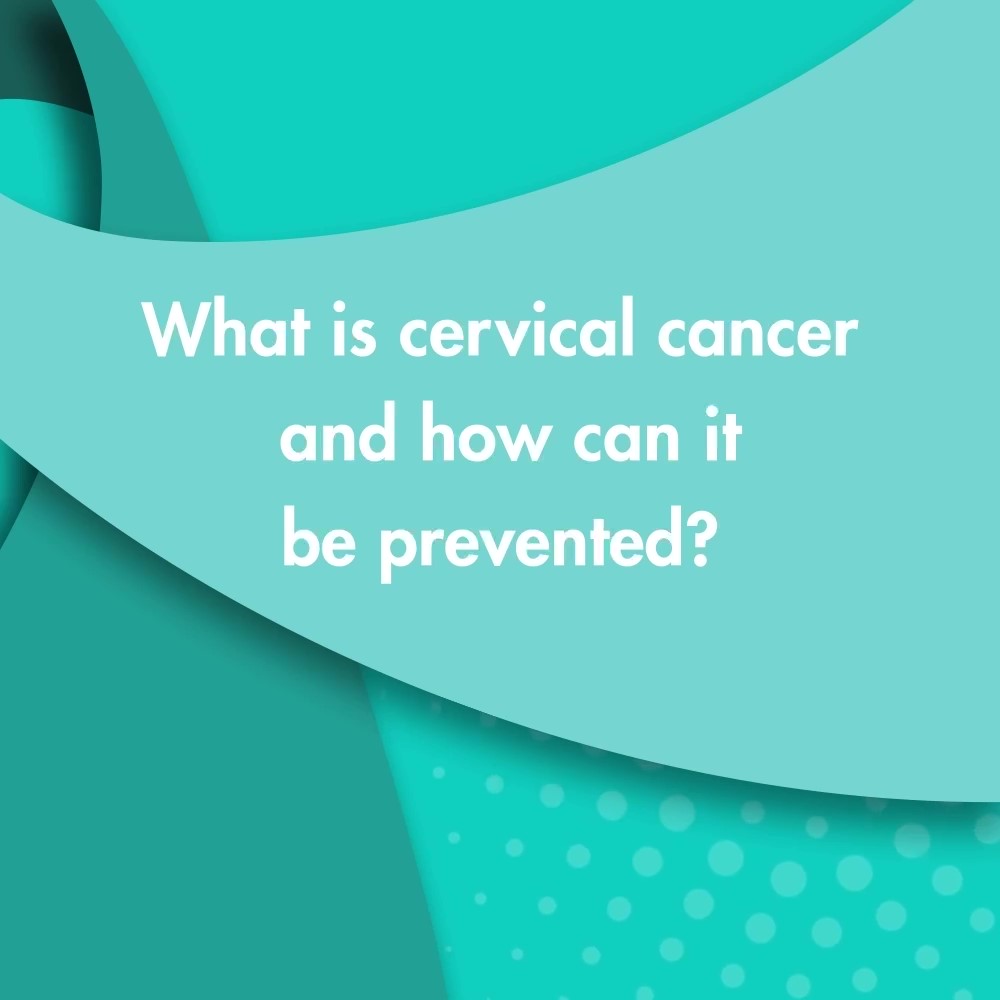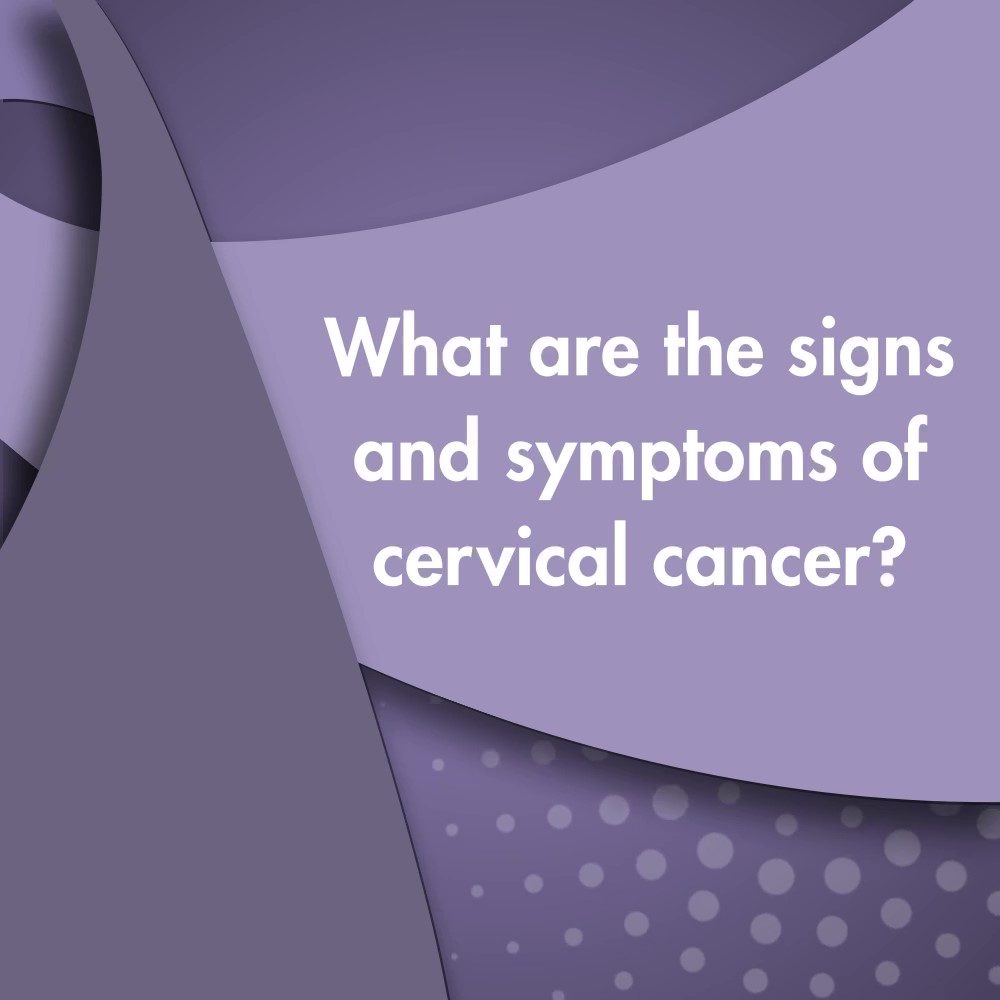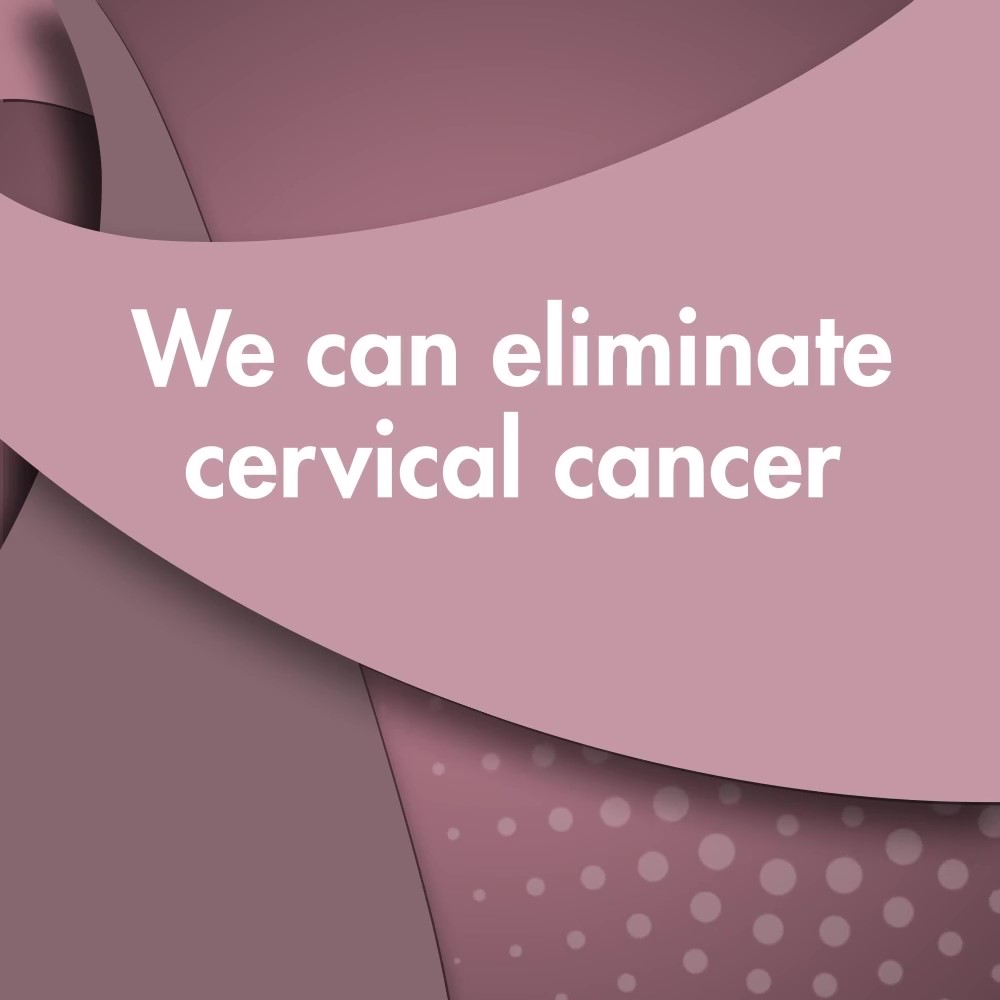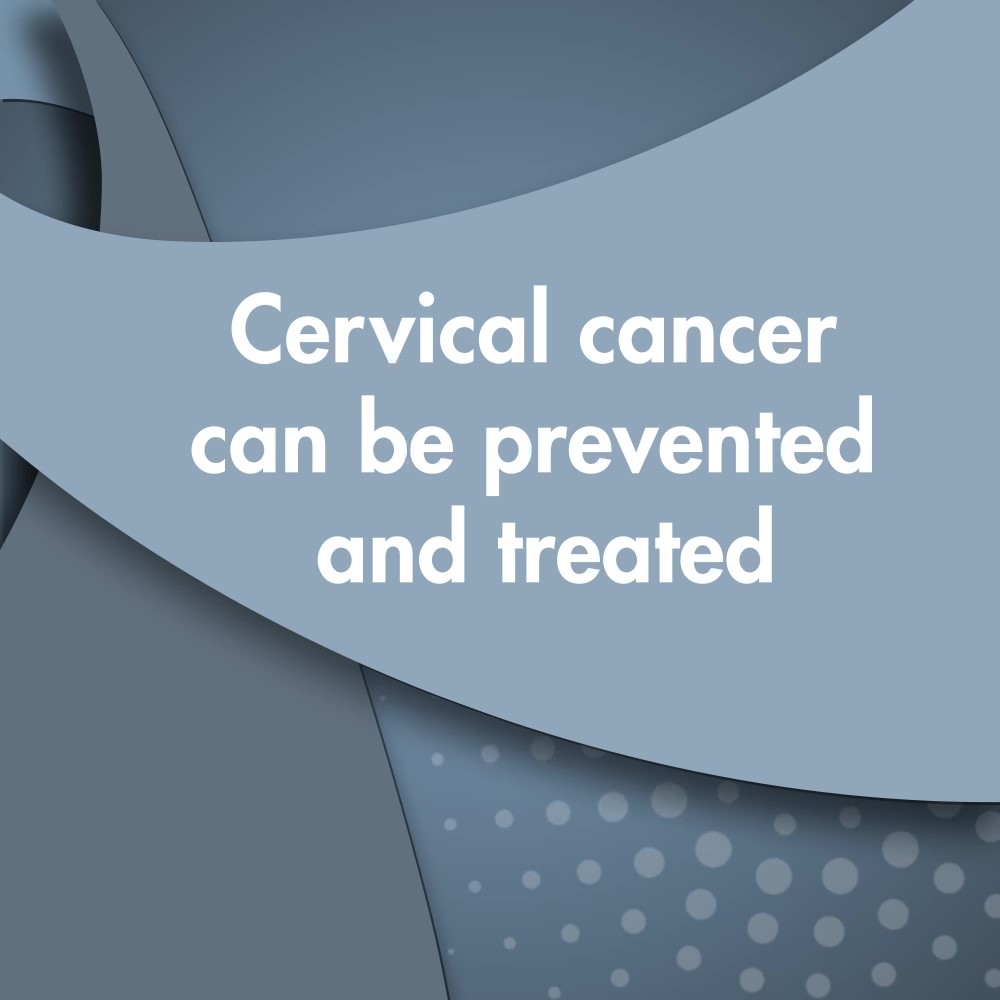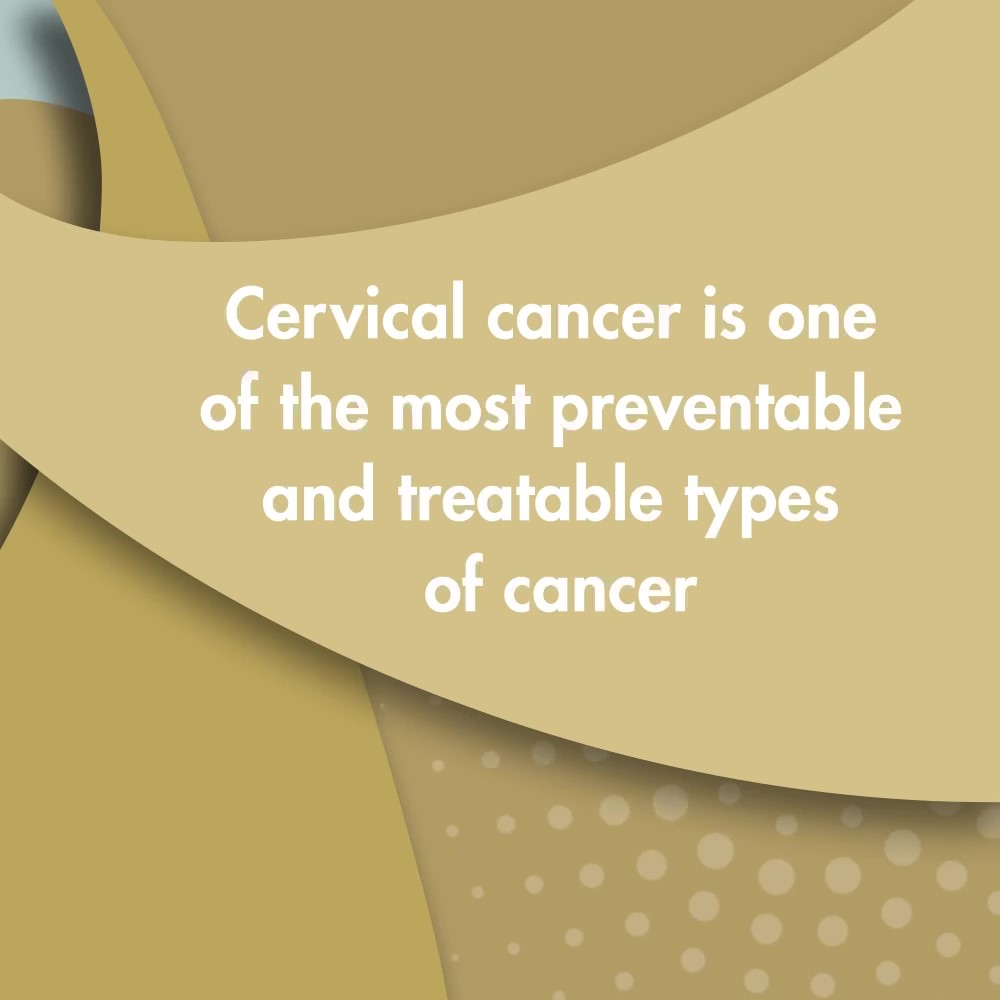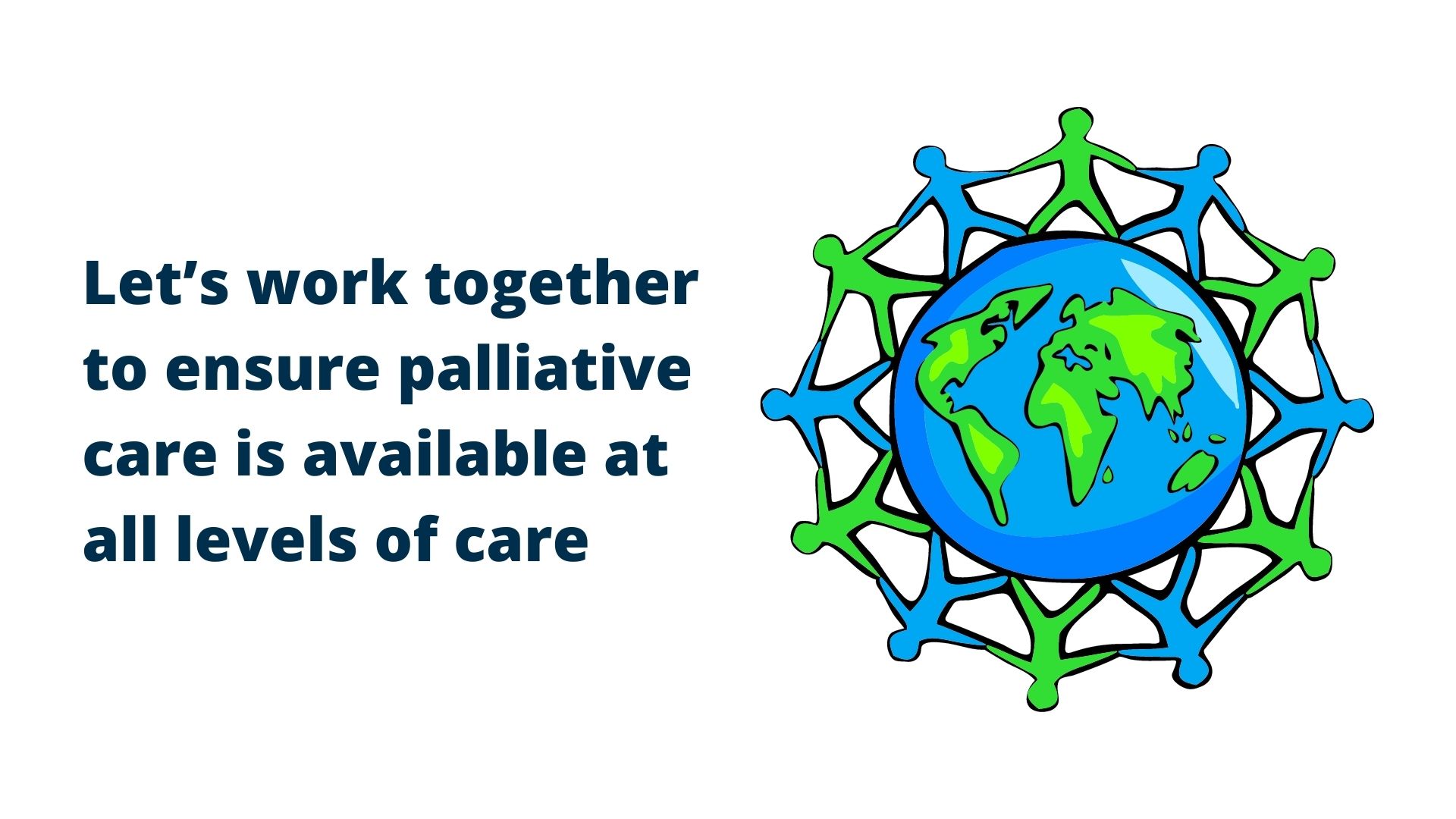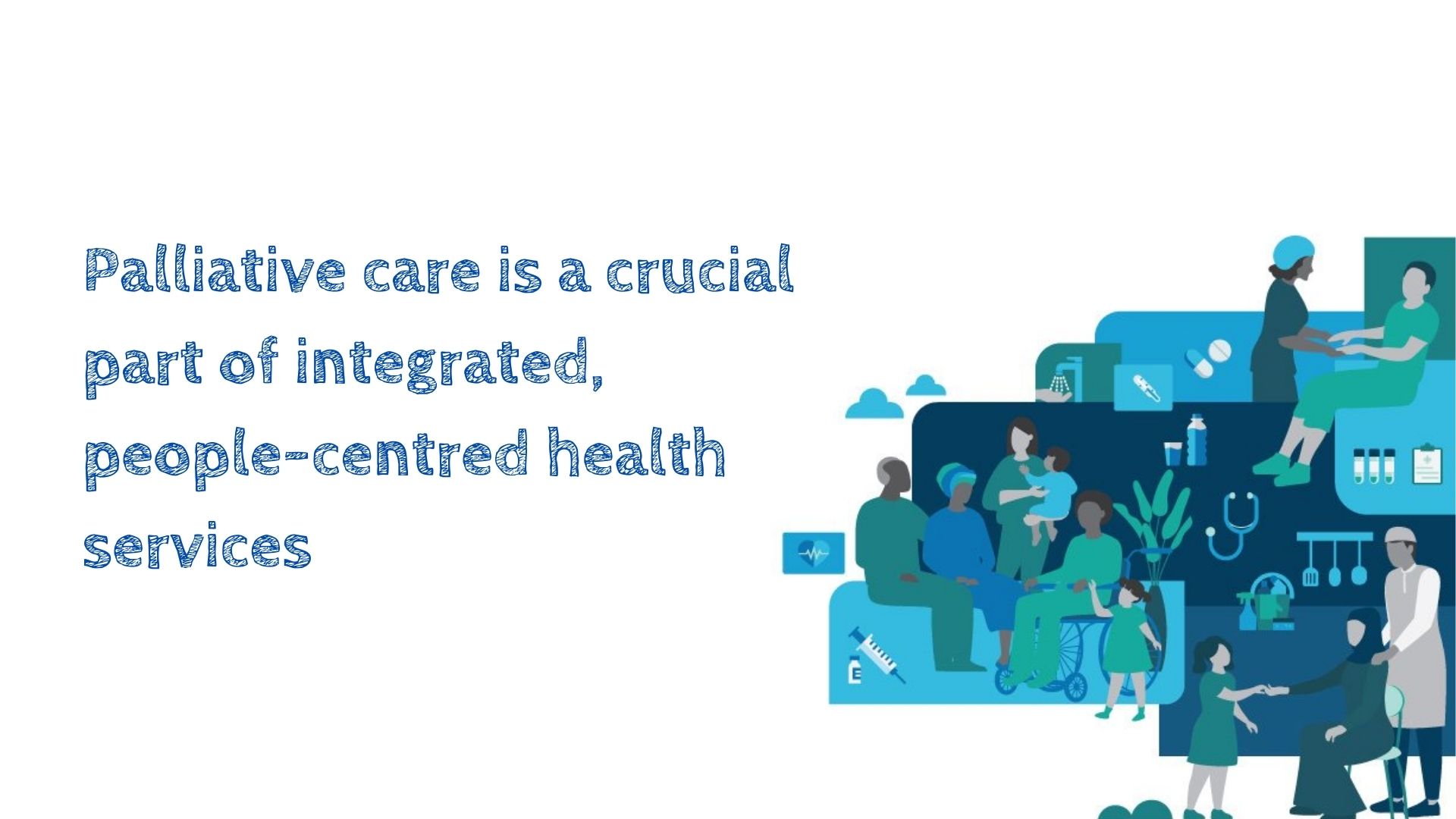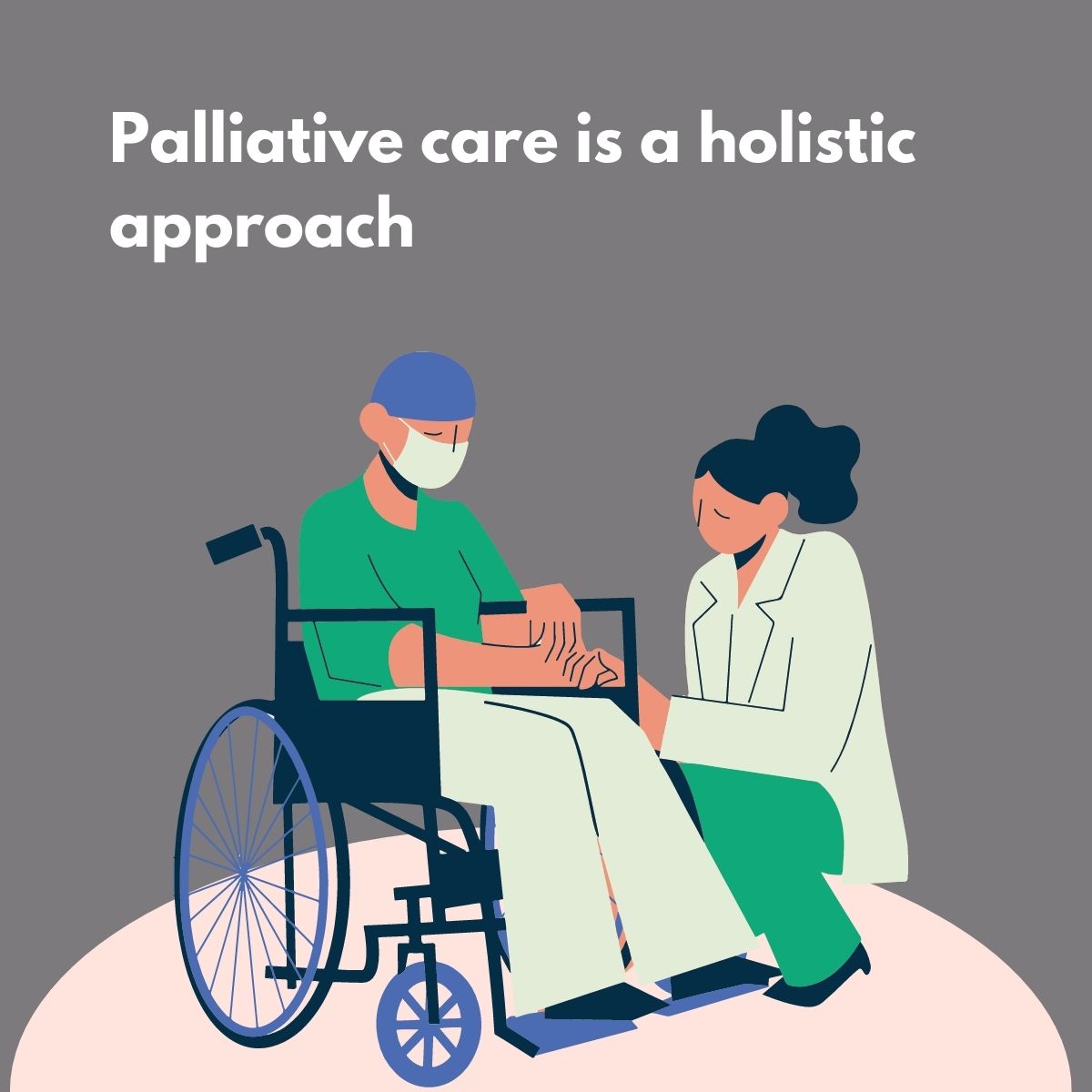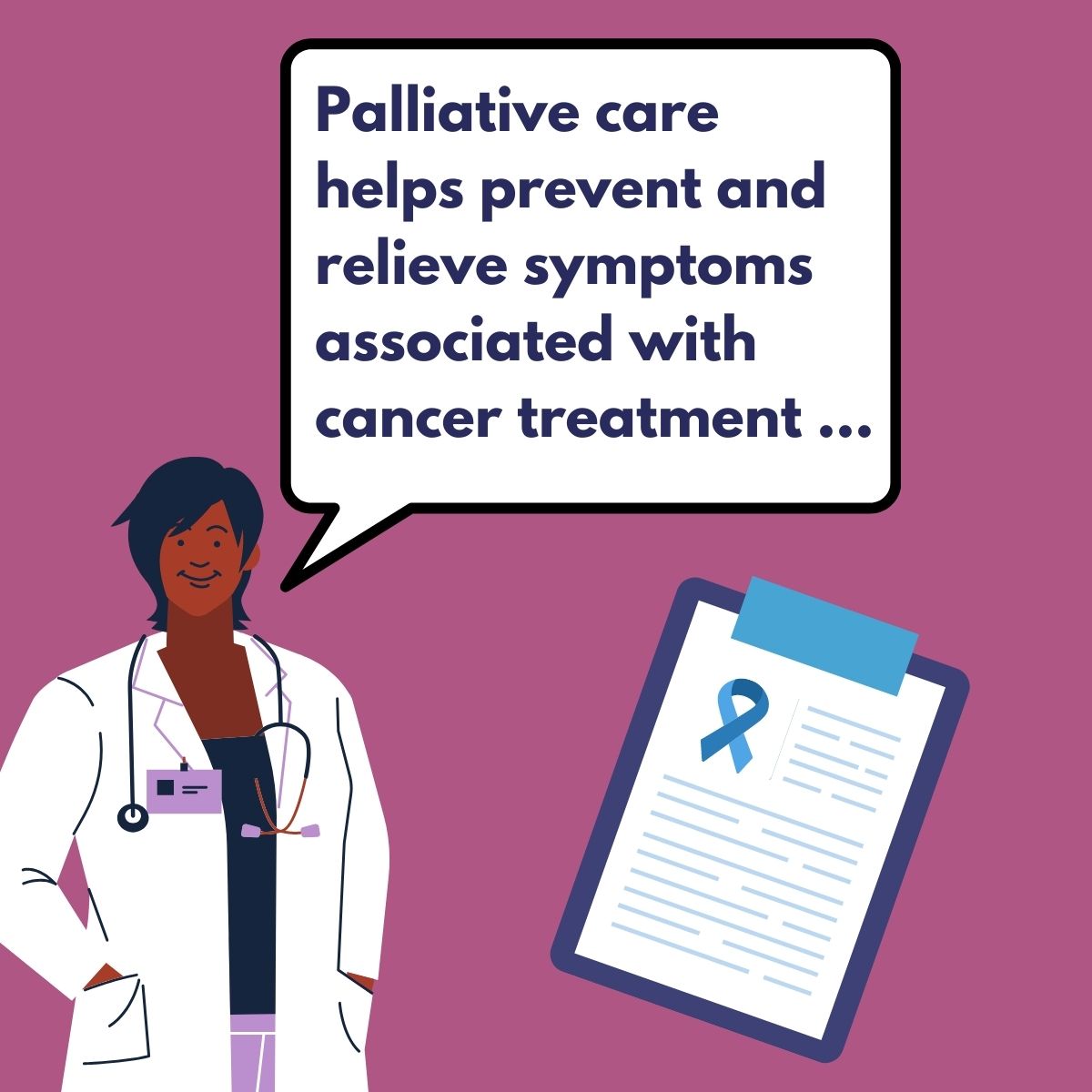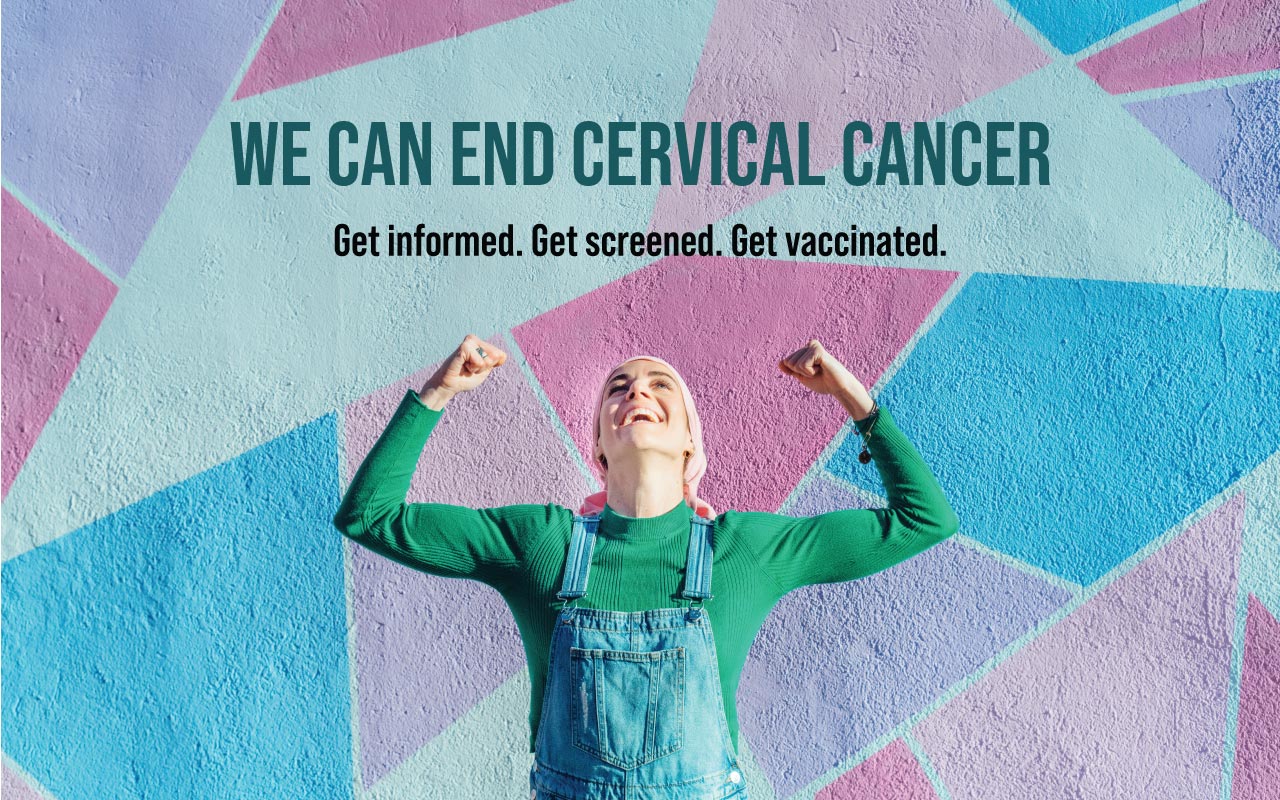
Cervical cancer develops in a woman's cervix (the entrance to the uterus from the vagina). Almost all cervical cancer cases (99%) are linked to infection with high risk human papillomavirus (HPV), an extremely common virus transmitted through sexual contact. Although most infections with HPV resolve spontaneously and cause no symptoms, persistent infection can cause cervical cancer in women.
Cervical cancer is the 6th most common cancer in women in the Eastern Mediterranean Region. In 2020, an estimated 89 800 women were diagnosed with cervical cancer in the Region and more than 47 500 women died from the disease.
January is Cervical Cancer Awareness Month. It is a perfect opportunity for WHO and partners to raise awareness about cervical cancer and HPV vaccination. This year, we are focusing on ending cervical cancer within a few generations as the theme for Cervical Cancer Awareness Month.
When diagnosed, cervical cancer is one of the most successfully treatable forms of cancer, as long as it is detected early and managed effectively. Cancers diagnosed in late stages can also be controlled with appropriate treatment and palliative care. With a comprehensive approach to prevent, screen and treat, we can end cervical cancer as a public health problem within a few generations.
On this Cervical Cancer Awareness Month, the messages are clear.
Get informed. Find out the facts about cervical cancer and the human papilloma virus (HPV) that causes it. Help educate other women in your life too.
Get screened. Cervical cancer screening typically starts at age 30 and is repeated periodically.
Get vaccinated. The HPV vaccine is given in 2 doses that should begin when a girl is between 9 and 14 years old.
Cervical Cancer Awareness Month also comes at a time when the world continues to recover from the COVID-19 pandemic, where substantial disruptions to essential health services persist. So during this month and beyond, let us work together, to build back healthier communities by improving access to HPV vaccination, screening, treatment for cervical pre-cancer and management of cervical cancer by 2030 and end cervical cancer within a few generations.
Regional cervical cancer elimination strategy for the Eastern Mediterranean
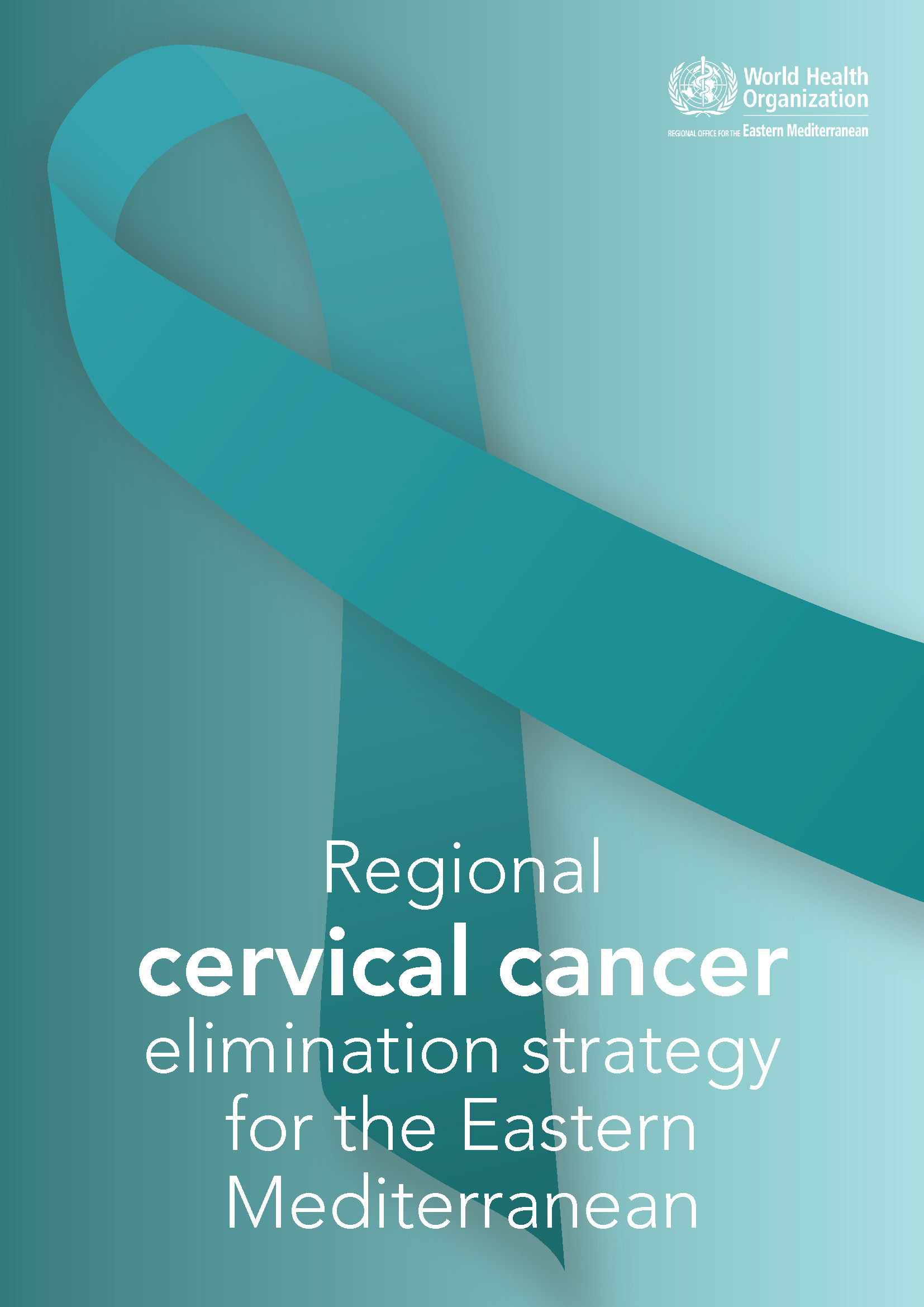
Despite being a preventable and curable disease, cervical cancer is responsible for a large burden of suffering in women around the world, especially in low- and middle-income countries. To uphold the right to health for adolescent girls and women, it is important that disparities in access to high-quality health services are addressed.
In 2020, the World Health Organization (WHO) set a goal to eliminate cervical cancer as a public health problem globally by 2120. To reach this goal, WHO’s Member States should strive to meet the following interim scale-up targets by 2030:
90% of girls are fully vaccinated with human papillomavirus (HPV) vaccine by 15 years of age;
70% of women are screened using a high-performance test by 35 years of age and again by 45 years of age;
90% of women with pre-cancer are treated, and 90% of women with invasive cancer are managed.
To build on the momentum of the Global strategy to accelerate the elimination of cervical cancer as a public health problem, a regional cervical cancer elimination strategy has been developed for the WHO Eastern Mediterranean Region that is adapted to the religious, cultural, social, economic and geographical contexts in the Region.
Regional cervical cancer elimination strategy: Executive summary English | Arabic | French
Regional cervical cancer elimination strategy: English | Arabic | French
Press release: Launch of the Regional cervical cancer elimination strategy for the Eastern Mediterranean
11 January 2023 | Cairo, Egypt
The World Health Organization (WHO) Regional Office for the Eastern Mediterranean formally launched today the Regional Cervical Cancer Elimination Strategy for the Eastern Mediterranean at a hybrid press conference hosted by WHO leaders and joined by women who have survived cervical cancer, advocates fighting the disease and high-level speakers. The event introduced the “90-70-90” targets set by the strategy: for countries to achieve 90% human papillomavirus (HPV) vaccination coverage for girls by age 15, 70% screening coverage for women by ages 35 and 45, and 90% treatment for cervical pre-cancer and management for women with cancer by 2030.
Press release English | Arabic
Global strategy to accelerate the elimination of cervical cancer as a public health problem
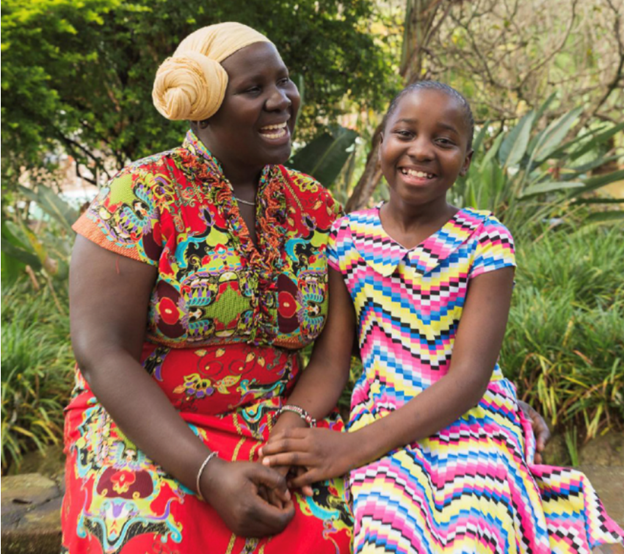
In August 2020, the World Health Assembly adopted the Global Strategy for Cervical Cancer Elimination. The Strategy outlines a comprehensive approach that includes prevention, effective screening and treatment of pre-cancerous lesions, early cancer diagnosis and programmes for the management of invasive cervical cancer including palliative care.
Global strategy to accelerate the elimination of cervical cancer as a public health problem
Cervical cancer elimination initiative knowledge repository
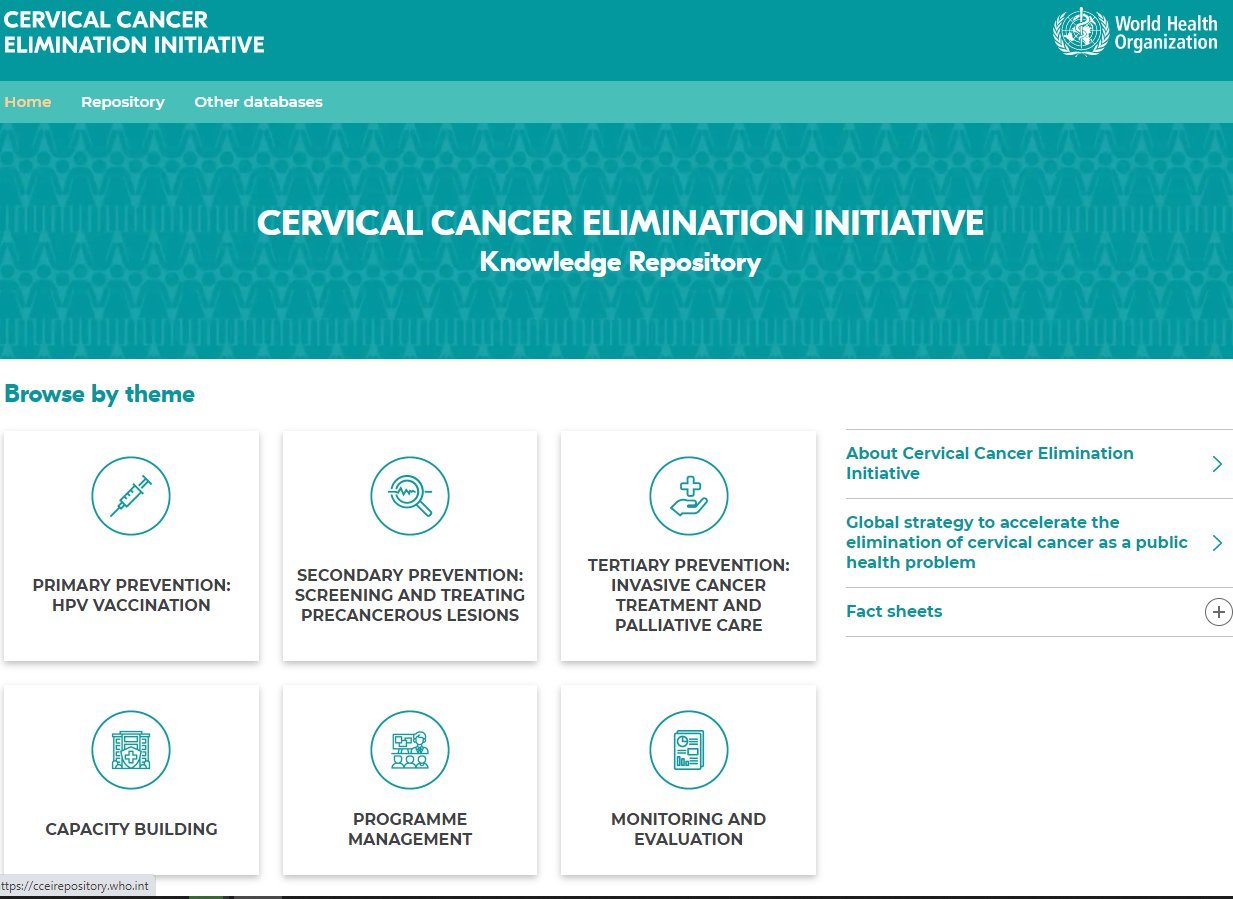
The Cervical Cancer Elimination Initiative Knowledge Repository was established to support the implementation of the Global Strategy by Member States. There are many sources of relevant guidance and information to guide these efforts. The Knowledge Repository is a web-based platform, which aims to map and provide "one-stop" access to the knowledge collected from a variety of sources.
Cervical cancer elimination initiative knowledge repository
Cervical cancer country profiles, 2021

The aim of the WHO Cervical Cancer Country Profiles is to bring out the current status of cervical cancer for each WHO Member States (194 total) curated from multiple data sources. These profiles help to establish a baseline for the country and support monitoring trends toward the achievement of the elimination of cervical cancer as a public health problem.
The profiles include the following information:
Burden of cervical cancer. Cervical cancer incidence, cumulative risk of cervical cancer, total number of deaths and trends in deaths, and cervical cancer mortality to incidence.
Primary prevention. HPV vaccination programme coverage and programme details, related risk factors including tobacco use prevention, condom use at last high risk sex and HIV incidence.
Secondary prevention. National screening programme for cervical cancer details and cervical cancer screening rate.
Treatment and supportive care. National guidelines for cervical cancer management, cancer diagnosis and treatment service availability, availability of specialized medical staff, palliative care.
Cervical cancer country profiles for all WHO Member States, 2021 Cervical cancer country profiles for WHO Member States in the Eastern Mediterranean Region, 2021Cervical cancer
What is cervical cancer?
Cervical cancer develops in a woman's cervix, which is the entrance to the uterus from the vagina. Almost all (99%) cervical cancer cases are linked to infection with high risk human papillomavirus (HPV), an extremely common virus transmitted through sexual contact.
Human papillomavirus (HPV)
Human papillomavirus (HPV) is the most common viral infection of the reproductive tract. Most sexually active women and men will be infected at some point in their lives and some may be repeatedly infected. HPV is sexually transmitted, but penetrative sex is not required for transmission. Skin-to-skin genital contact is a well-recognized mode of transmission.
There are many types of HPV, and many do not cause problems. HPV infections usually clear up without any intervention within a few months after acquisition, and about 90% clear within 2 years. A small proportion of infections with certain types of HPV can persist and progress to cervical cancer.








